Your cart is currently empty!
Author: admin
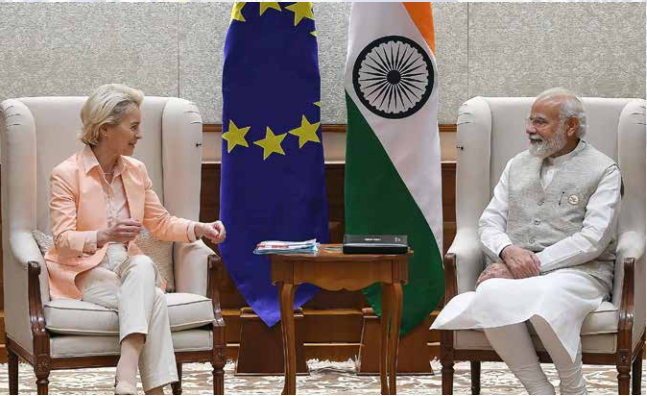
India and the European Union Strengthen Strategic Partnership through High-Level Engagement
In a significant diplomatic engagement, the Prime Minister of India recently hosted European Commission President Ursula von der Leyen, along with the EU College of Commissioners, marking a crucial moment in India-EU relations. This historic visit, the inaugural instance of the College of Commissioners convening outside Europe at the commencement of a new EU mandate, underscores the shared commitment to augmenting strategic cooperation across diverse sectors.
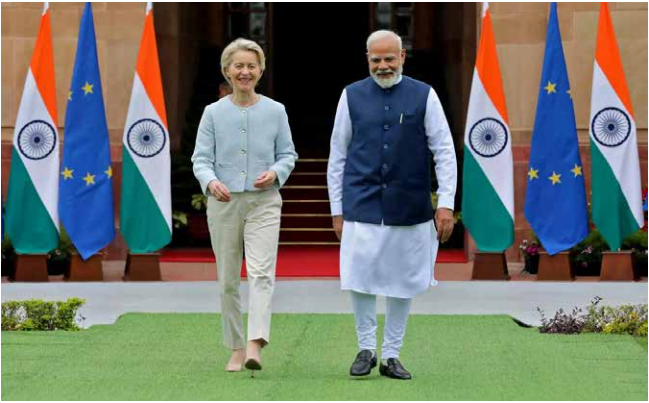
Prime Minister Shri Narendra Modi and President Ursula von der Leyen asserted that the EU-India Strategic Partnership has generated substantial benefits for their respective populations and the broader global community. They pledged to elevate this partnership, building on two decades of the India-EU Strategic Partnership and over thirty years of cooperation under the India-EC Cooperation Agreement.
President von der Leyen’s official visit on 27-28 February 2025 is particularly noteworthy as it represents the first occasion that the College of Commissioners has convened outside the European continent since their new mandate began, as well as the first such engagement in the annals of India-EU bilateral relations.
As two of the largest democracies and open market economies with diverse pluralistic societies, India and the EU reaffirmed their collective commitment to fostering a resilient multipolar global order that underpins peace, stability, economic growth, and sustainable development.
A Partnership for a Transforming World
In light of the rapid transformations characterising the global landscape—driven by advancements in artificial intelligence, emerging technologies, and fluctuating geopolitical and economic dynamics—the partnership between India and the EU assumes heightened importance. Both entities, unified by democratic values and a commitment to a rules-based international order, continue to bolster their collaboration to address global challenges while unlocking new economic and technological possibilities.
Reflecting on the two-decade-long strategic partnership, the Prime Minister commended the high-level ministerial engagements that occurred during the visit, which included approximately twenty bilateral meetings and a productive session of the India-EU Trade and Technology Council (TTC). These discussions have laid a robust foundation for deeper collaboration across multiple domains.
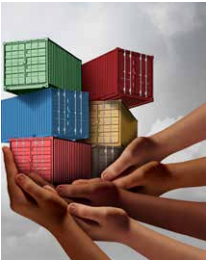
Key Areas of Cooperation
The leaders underscored that shared values and principles—such as democracy, the rule of law, and adherence to a rules-based international order aligned with the purposes and principles of the UN Charter—position India and the EU as like-minded and trusted partners. The India-EU Strategic Partnership is deemed essential now more than ever to collaboratively address global issues, foster stability, and promote mutual prosperity.
In this context, the leaders delineated eight strategic priorities that will shape the next phase of India-EU cooperation:
Supply Chain Resilience
The India-EU Trade and Technology Council will be directed to enhance its engagement to foster outcome-oriented cooperation in areas pertaining to economic security and supply chain resilience. This includes market access and trade barriers, augmentation of semiconductor ecosystems, sustainable artificial intelligence, high-performance computing, 6G technology, digital public infrastructure, and collaborative research and innovation targeting green and clean energy technologies. Emphasis will also be placed on trustworthy partnerships and industry linkages across these sectors, particularly regarding the recycling of batteries for electric vehicles, addressing marine plastic litter, and converting waste to green or renewable hydrogen. In this regard, progress in the implementation of the Memorandum of Understanding on semiconductors for strengthening supply chains has been welcomed, which includes leveraging complementary strengths and facilitating talent exchanges to enhance semiconductor skills among students and young professionals. Additionally, the signing of the Memorandum of Understanding between the Bharat 6G alliance and the EU 6G Smart Networks and Services Industry Association aims to create secure and trusted telecommunications while fostering resilient supply chains.

Strategic Technologies, Digital Governance, and Digital
Connectivity
India and the European Union (EU) have reaffirmed their commitment to enhancing digital cooperation through the establishment of the Working Group on Strategic Technologies. Both parties aim to facilitate a human-centric digital transformation by advancing key areas such as artificial intelligence (AI), semiconductors, high-performance computing, and 6G technology, thereby ensuring economic security and competitiveness.
The parties have agreed to improve the interoperability of Digital Public Infrastructure (DPI) while prioritising the protection of human rights, privacy, and intellectual property. The mutual recognition of electronic signatures is expected to streamline cross-border digital transactions.
To fortify semiconductor supply chains, India and the EU will collaborate on research and development (R&D) in chip design, sustainable technologies, and advanced manufacturing processes. Additionally, the launch of talent exchange programmes will further enhance this collaboration.

In terms of AI, both sides are committed to its safe, responsible, and trustworthy development, with plans to expand cooperation between the European AI Office and the India AI Mission. Joint initiatives will focus on ethical AI, large language models, and their applications in climate science and bioinformatics.
A newly established 6G partnership between the Bharat 6G Alliance and the EU’s 6G Smart Networks Association will align research and development priorities and bolster telecommunications security. Further cooperation will encompass standardisation in information technology and telecommunications, the development of digital skills, and the establishment of legal frameworks for skilled professionals.
Both parties have also pledged to collaborate on the implementation of the Global Digital Compact and advance multi-stakeholder internet governance, particularly through WSIS+20.
Clean and Green Technologies
India and the EU have reiterated their commitment to achieving net-zero emissions, with India targeting 2070 and the EU aiming for 2050, through technological innovation, investment, and market collaboration. To propel advancements in clean technologies, they intend to strengthen R&D partnerships, support startups and small to medium-sized enterprises (SMEs), and promote the market adoption of innovative solutions.
A joint research fund amounting to EUR 60 million has been established for critical sustainability initiatives, including battery recycling for electric vehicles, the detection of marine plastic litter, and waste-to-hydrogen technologies. Expert exchanges will address EV interoperability, charging infrastructure, and standardisation. Moreover, an Ideathon will facilitate collaborative problem-solving regarding marine plastic pollution, while both sides will explore harmonised hydrogen safety standards and advances in wastewater treatment technologies.
Trade, Investment, and Resilient Value Chains
India and the EU are committed to fostering resilient, diversified, and sustainable value chains, complementing ongoing negotiations regarding the Free Trade Agreement (FTA) and the Investment Protection Agreement (IPA). Their collaboration will span several key sectors:
1. Agriculture – Focus on strengthening climate-resilient farming practices, crop diversification, and strategies for food security.
2. Pharmaceuticals – Aim to enhance transparency and sustainability in the supply chains of Active Pharmaceutical Ingredients (APIs).
3. Clean Technologies – Work towards expanding supply chains for solar energy, offshore wind energy, and hydrogen while minimising trade barriers and encouraging investment.
Both parties will continue to address market access issues and enhance cooperation regarding Foreign Direct Investment (FDI) screening. They have reaffirmed their support for reforms within the World Trade Organisation (WTO) and a functional dispute resolution system, alongside ongoing discussions regarding the EU’s Carbon Border Mechanism (CBAM) to address challenges facing SMEs.
Reiterating their commitment to strengthen economic and technological cooperation, India and the EU plan to reconvene within a year for the next Trade and Technology Council (TTC) meeting to evaluate progress and establish new priorities.
Connectivity and Climate Action
Concrete steps will be undertaken to realise the India-Middle East-Europe Economic Corridor (IMEC), as announced during the G20 Leaders’ Summit in New Delhi. Additionally, both parties will further deepen their cooperation within the framework of the International Solar Alliance (ISA), the Coalition for Disaster Resilient Infrastructure (CDRI), the Leadership Group for Industry Transition (LeadIT 2.0), and the Global Biofuels Alliance.

Furthermore, India and the EU will continue to expand and deepen collaboration in connectivity, clean energy, climate, water management, smart and sustainable urbanization, and disaster management. Specific areas of intensified cooperation will include clean hydrogen, offshore wind energy, solar energy, sustainable urban mobility, aviation, and rail systems. In this context, both parties have welcomed the agreement to hold an India-EU Green Hydrogen Forum and the India-EU Business Summit on Offshore Wind Energy.
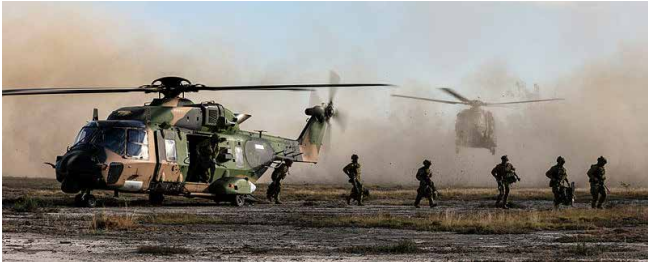
Defence Cooperation
The leaders have expressed satisfaction with the growth of cooperation within the defence and security sectors, which includes joint exercises and collaboration between the Indian Navy and EU maritime security entities. The EU has welcomed India’s interest in participating in projects under the EU’s Permanent Structured Cooperation (PESCO) and engaging in negotiations for a Security of Information Agreement (SoIA). The leaders also reaffirmed their commitment to exploring a security and defence partnership.
People-to-People Ties
India and the European Union (EU) are committed to enhancing their people-to-people ties across various sectors including education, research, culture, sports, tourism, and youth exchanges. This collaboration aims to foster mutual understanding, create economic opportunities, and promote shared growth, reflecting a longstanding commitment to a more interconnected future.
India continues to be a primary beneficiary of the EU’s Erasmus+ program, with over 6,000 scholarships awarded. Additionally, more than 2,700 Indian researchers have participated in the Marie Skłodowska-Curie Actions, representing the highest participation rate globally. The inauguration of India’s first Jean Monnet Centre of Excellence at Manipal Academy further strengthens academic cooperation. In recognition of India’s skilled workforce and the labour market needs within the EU, both parties have initiated Phase II of the India-EU Migration and Mobility project. This project seeks to facilitate legal migration and mitigate irregular movement, with Indian professionals now acquiring over 20% of EU Blue Cards. Efforts to streamline Schengen visa processes and enhance air connectivity, as established under the 2008 Horizontal Civil Aviation Agreement, are expected to boost business, tourism, and academic exchanges. Furthermore, expanded cultural, sports, and youth collaborations will enhance cross-cultural understanding and fortify long-term ties. Through these initiatives, India and the EU are establishing a foundation for a more interconnected and mutually beneficial partnership.
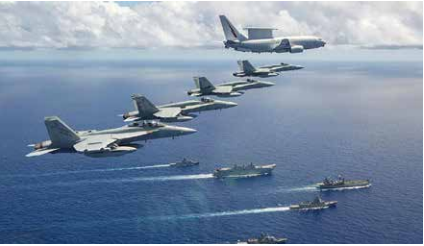
During recent discussions, the leaders addressed key international and regional issues, including the Middle East and the war in Ukraine. They reaffirmed their dedication to achieving a just and lasting peace in Ukraine, grounded in adherence to international law, the UN Charter, as well as the principles of territorial integrity and sovereignty. Regarding the Israel-Palestine conflict, both parties reiterated their steadfast support for a two-state solution, envisioning peaceful coexistence within recognised borders in accordance with international law.
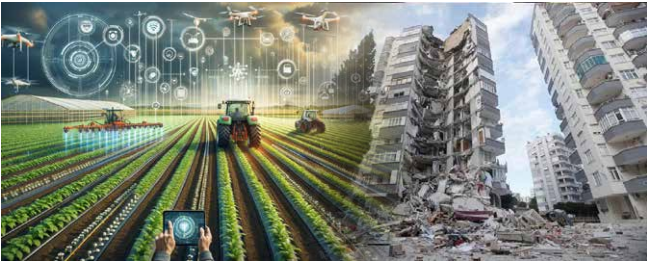
Acknowledging the depth and productivity of their dialogue, the leaders agreed upon a series of concrete steps to advance bilateral cooperation. They committed to expediting the conclusion of the Free Trade Agreement (FTA) by the conclusion of the year and to intensifying discussions regarding defense industry collaboration and related policy initiatives. A review meeting with stakeholders will evaluate progress concerning the India-Middle East-Europe Economic Corridor (IMEC), while efforts to enhance maritime domain awareness will improve shared assessments, coordination, and interoperability.
To foster technological and economic collaboration, both parties agreed to convene the next Trade and Technology Council (TTC) meeting at the earliest opportunity to deepen cooperation in semiconductors and other critical technologies. They also pledged to enhance dialogue among governments and industries concerning clean and green energy, with a particular focus on green hydrogen. In the Indo-Pacific region, cooperation will be expanded through trilateral initiatives, reinforcing shared strategic priorities. Additionally, efforts to strengthen disaster management coordination will be advanced through both policy and technical engagements, improving preparedness, response capabilities, and overall resilience.
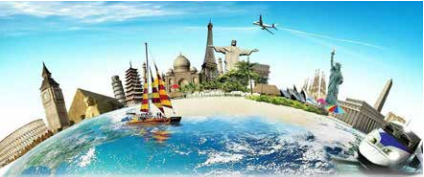
A Vision for the Future
As preparations for the forthcoming India-EU Summit are underway, both parties reiterated their commitment to ambitious actions and a shared vision for a resilient global order. President von der Leyen acknowledged India’s increasing role in shaping international developments, while the Prime Minister emphasissed the importance of speed and strategic foresight in an era characterized by rapid technological advancements. The session concluded with a mutual optimism for the future, with both leaders agreeing to organize the next India-EU Summit at the earliest opportunity, during which a new joint Strategic Agenda will be adopted. This high-level engagement represents a significant moment in India-EU relations, setting the stage for deeper cooperation and sustainable global progress in the years to come.

A World Prepared: Innovations and Challenges in Global Disability-Inclusive Disaster Management
Disasters don’t discriminate – but preparedness often does. Around the world, persons with disabilities face unique challenges in times of crisis, from inaccessible evacuation routes to communication barriers in emergency alerts. Yet, amidst these challenges, innovators are rising to the occasion, creating inclusive solutions that ensure no one is left behind. Our Cover Story explores the evolving landscape of disability-inclusive disaster management, spotlighting groundbreaking innovations and addressing the persistent gaps that need urgent attention. As climate change and global crises grow more frequent, building resilience means embracing diversity in preparedness. Let’s dive into the strategies shaping a safer, more inclusive future for all.
In an era of escalating climate crises, pandemics, and geopolitical instability, the world is awakening to a stark reality: disasters do not discriminate, but their impacts do. For the estimated 1.3 billion people living with disabilities—roughly one in six people globally—the stakes are disproportionately high. Mortality rates for persons with disabilities during disasters can be two to four times higher than for the general population, a grim statistic that underscores a long-standing failure to prioritize inclusivity in disaster management. Yet, amid this sobering backdrop, a quiet revolution is underway. From grassroots advocacy to cutting-edge technology, global efforts to integrate disability-inclusive disaster preparedness and response are gaining momentum. This cover story delves into the innovations driving change, the challenges that persist, and the lessons gleaned from recent disasters that could shape a more resilient future.
The Global Landscape: Trends in Disability-
Inclusive Disaster
Management
The past decade has seen a seismic shift in how the world approaches disaster risk reduction (DRR). The Sendai Framework for Disaster Risk Reduction 2015–2030, a landmark United Nations agreement, explicitly calls for the inclusion of persons with disabilities as active stakeholders in DRR policies and practices. This framework, paired with the United Nations Convention on the Rights of Persons with Disabilities (CRPD), has spurred governments, NGOs, and communities to rethink preparedness and response through an inclusive lens. The numbers tell a compelling story: 16% of the global population lives with a disability, with 80% residing in the Global South, where climate-related disasters are intensifying. This demographic reality has fueled a push for universal design, accessible early warning systems, and community-led initiatives.
One notable trend is the rise of disability-led organizations taking center stage. Groups like the Partnership for Inclusive Disaster Strategies in the United States and the Pacific Disability Forum in Asia-Pacific are not just advocating for change—they’re driving it. These organizations emphasize “nothing about us without us,” ensuring that persons with disabilities shape the policies and tools meant to protect them. Another trend is the integration of technology: from sign language-enabled emergency alerts in Jordan to apps that map accessible evacuation routes in Australia, innovation is bridging gaps that once seemed insurmountable. Yet, for every step forward, systemic barriers—poverty, inaccessible infrastructure, and a lack of disaggregated data—threaten to stall progress.
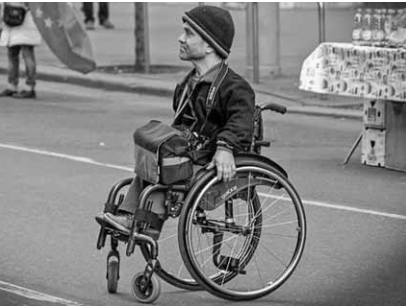
Case Study 1: The 2022 Pakistan Floods—A Test of Resilience
In mid-2022, Pakistan faced one of its worst natural disasters in decades as monsoon rains submerged a third of the country, displacing millions and claiming over 1,700 lives. Among the hardest hit were persons with disabilities, many of whom lived in rural, flood-prone areas with limited access to resources. A report from the International Disability Alliance highlighted a stark disparity: while early warning systems saved countless lives, inaccessible communication channels—such as radio broadcasts without sign language or text alternatives—left deaf and visually impaired individuals stranded.
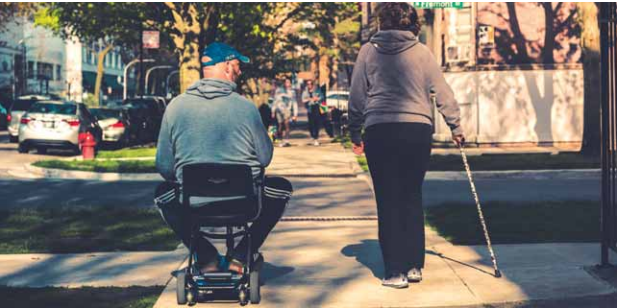
Yet, amid the chaos, a glimmer of innovation emerged. Local disability organizations, supported by international partners like CBM Global, mobilized to distribute accessible aid kits tailored to diverse needs: wheelchairs for mobility-impaired individuals, braille instructions for the blind, and hearing aids for the deaf. In Sindh province, community volunteers trained in disability-inclusive evacuation protocols helped evacuate over 200 persons with disabilities from flooded villages. This grassroots response showcased the power of preparedness, but it also exposed gaps: only a fraction of affected communities had such support, and post-disaster recovery efforts largely overlooked accessibility, leaving rebuilt homes and shelters unusable for many. The Pakistan floods underscored a dual truth—small-scale innovation can save lives, but without systemic integration, it’s a drop in the ocean.
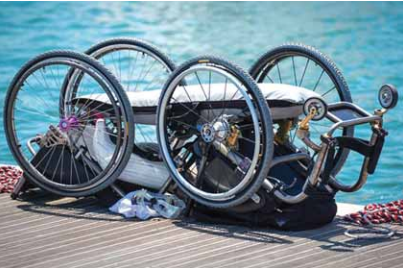
Case Study 2: Australia’s Black Summer Bushfires-Lessons in Collaboration
The 2019–2020 Black Summer bushfires in Australia, which scorched over 18 million hectares and displaced thousands, offered another lens into disability-inclusive disaster management. For persons with disabilities, the fires posed unique challenges: smoke inhalation exacerbated respiratory conditions, evacuation routes were often impassable for wheelchair users, and emergency shelters lacked basic accommodations like ramps or quiet spaces for those with sensory sensitivities.
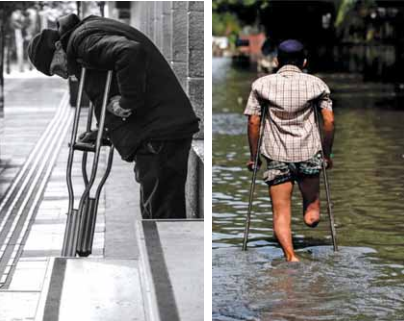
Enter the Person-Centred Emergency Preparedness (P-CEP) toolkit, a pioneering initiative co-developed by the University of Sydney and disability advocates. Launched prior to the bushfires, P-CEP empowered individuals to assess their own capabilities and needs, from securing backup power for medical devices to identifying support networks. During the crisis, disability service providers in New South Wales used P-CEP to coordinate with local emergency managers, ensuring that at least 60% of surveyed individuals with disabilities had tailored evacuation plans—double the national average at the time. The toolkit’s success lay in its emphasis on self-advocacy, but its reach was limited by awareness and funding. Post-fire analyses revealed that while urban areas benefited, rural communities—where disability prevalence is higher—remained underserved, highlighting the urban-rural divide as a persistent challenge.
Innovations on the
Horizon
Across the globe, creative solutions are redefining what preparedness looks like. In Japan, a leader in disaster resilience, the government has piloted AI-driven early warning systems that adapt to individual needs—delivering voice alerts for the visually impaired and vibrations for the deaf. In Bangladesh, the World Bank has funded evacuation shelters built with Universal Design principles, featuring ramps, tactile signage, and wider doorways, benefiting not just persons with disabilities but also the elderly and pregnant women. Meanwhile, virtual reality training programs in the Philippines are equipping emergency responders with simulations of assisting individuals with diverse impairments, fostering empathy and practical skills.
These innovations signal a shift from reactive to proactive planning, but scalability remains a hurdle. High costs, limited political will, and a lack of disability-disaggregated data—crucial for targeting resources—often confine these projects to pilot stages. As one advocate in Tuvalu noted, “We can build the tools, but if no one knows who needs them, they’re useless.”
The Challenges Ahead
For all the progress, the road to a truly disability-inclusive world is fraught with obstacles. The 2023 UNDRR Global Survey on Persons with Disabilities and Disasters painted a sobering picture: 84% of respondents lacked a personal preparedness plan, and 86% had no role in community DRR decision-making, despite 57% expressing willingness to participate. Accessibility remains a glaring issue—shelters, transportation, and information systems are still designed with able-bodied users in mind. In low- and middle-income countries, where resources are stretched thin, disability inclusion often takes a backseat to immediate survival needs.
Systemic discrimination compounds these challenges. Unemployment and poverty, disproportionately high among persons with disabilities, limit their ability to prepare—how do you stockpile supplies with no income? Moreover, the voices of those with cognitive or psychosocial disabilities are often sidelined, even within inclusive frameworks, perpetuating a cycle of exclusion.
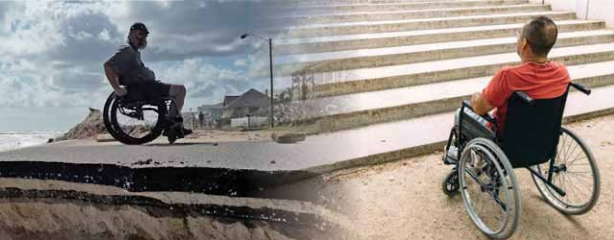
A Call to Action
The innovations and case studies of today offer a blueprint for tomorrow, but they demand action on a grand scale. Governments must prioritize disability-disaggregated data to map vulnerabilities accurately. Emergency planners must embed Universal Design into infrastructure from the outset—retrofitting is costlier and less effective. Communities must amplify disability-led voices, recognizing lived experience as expertise. And globally, we must bridge the gap between commitment and implementation, turning the Sendai Framework’s promises into tangible outcomes. As the frequency and intensity of disasters rise, so too does the urgency of this mission. A world prepared isn’t just one with stronger levees or better forecasts—it’s one where no one is left behind. For the 1.3 billion people with disabilities, that promise is long overdue. The question now is whether we’ll rise to meet it.
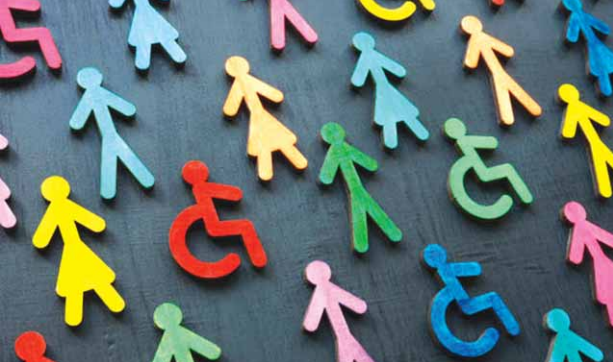
Essential Toolkit: Top Resources for Enhancing Disability Inclusion in Disaster Management
Inclusive disaster management starts with the right knowledge and tools. For policymakers, emergency responders, community leaders, and advocates, understanding the unique needs of persons with disabilities during emergencies is crucial — but knowing where to find reliable resources can be just as important.
This article curates a comprehensive toolkit of top resources designed to enhance disability inclusion in disaster preparedness and response. From global guidelines to practical checklists, training manuals, and innovative tech solutions, these resources offer valuable insights to help build safer, more inclusive communities. Whether you’re crafting a new preparedness plan or strengthening existing strategies, this toolkit is your guide to making inclusion a reality when it matters most.
Introduction
Disasters magnify inequalities, and persons with disabilities (PwDs) often bear the brunt of systemic exclusion. From inaccessible evacuation routes to communication barriers, the challenges are vast—but so are the solutions. This article curates a global toolkit of resources, tools, and organizations dedicated to advancing disability-inclusive disaster risk reduction (DRR). Whether you’re a policymaker, responder, NGO worker, or advocate, these resources offer actionable guidance to ensure no one is left behind in emergencies.
1. International
Frameworks and
Guidelines
1.1 United Nations Office for Disaster Risk Reduction (UNDRR)
• Resource: Disability-Inclusive Disaster Risk Reduction Guidelines
• Description: A comprehensive guide aligning DRR strategies with the UN Convention on the Rights of Persons with Disabilities (CRPD).
• Key Features: Checklists for inclusive planning, case studies, and policy templates.
• Provided by: UNDRR Disability Inclusion
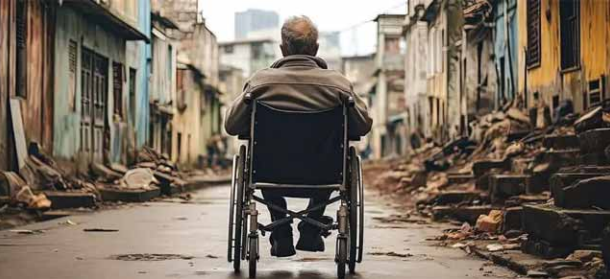
1.2 Sendai Framework for Disaster Risk Reduction (2015–2030)
• Resource: Priority 4: Enhancing Disaster Preparedness
• Description: The first global framework mandating PwD participation in DRR.
• Key Features: Guidelines on accessible early warning systems and community engagement.
• Provided by: Sendai Framework
1.3 World Health Organization (WHO)
• Resource: Disability-Inclusive Emergency Preparedness and Response
• Description: Technical guidance on accessible healthcare and evacuation during disasters.
• Key Features: Protocols for assisting PwDs with mobility, sensory, and cognitive disabilities.
• Provided by: WHO Disability Toolkit
2. Government Agencies and National Policies
2.1 National Institute of Disaster Management (NIDM), India
• Resource: Guidelines on Disability-Inclusive Disaster Risk Reduction
• Description: India’s pioneering policy framework for accessible shelters, alerts, and training.
• Key Features: Case studies from Odisha and Kerala, accessible infrastructure checklists.
• Provided by: NIDM Guidelines
2.2 Federal Emergency Management Agency (FEMA), USA
• Resource: Office of Disability Integration and Coordination (ODIC)
• Description: Ensures ADA compliance in U.S. disaster response.
• Key Features: Training modules, accessible communication tools, and evacuation planning guides.
• Provided by: FEMA ODIC
2.3 Japan International Cooperation Agency (JICA)
• Resource: Disability-Inclusive DRR Projects
• Description: Supports accessible infrastructure in disaster-prone countries like Nepal and Indonesia.
• Key Features: Universal design standards for shelters, earthquake-resistant wheelchair ramps.
• Provided by: JICA Disability Inclusion
3. NGOs and Advocacy Organizations
3.1 CBM Global Disability Inclusion
• Resource: Inclusive Humanitarian Action Toolkit
• Description: Practical tools for NGOs to mainstream disability in disaster response.
• Key Features: Accessibility audits, inclusive needs assessments, and PwD engagement strategies.
• Provided by: CBM Toolkit
3.2 Disability Rights Fund (DRF)
• Resource: Grassroots Advocacy Grants
• Description: Funds disability-led initiatives in disaster preparedness.
• Key Features: Supports projects in 10+ countries, including India and Bangladesh.
• Provided by: Disability Rights Fund
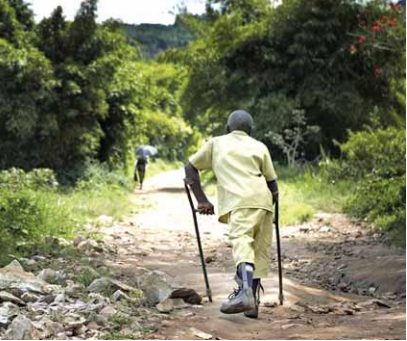
3.3 National Centre for Promotion of Employment for Disabled People (NCPEDP), India
• Resource: Accessible India Campaign
• Description: Advocates for disability-inclusive infrastructure and policies.
• Key Features: State-wise accessibility audits, disaster preparedness workshops.
• Provided by: NCPEDP
4. Tools and Technologies
4.1 SAMBHAV App (India)
• Developer: National Institute of Disaster Management (NIDM)
• Features: Customizable alerts (text-to-speech, sign language), GPS-enabled evacuation routes.
• Use Case: Guided 5,000+ PwDs during the 2023 Assam floods.
• Provided by: SAMBHAV App
4.2 IncluTech AI Sign Language Interpreter
• Developer: Kochi-based startup IncluTech
• Features: Real-time sign language translation for disaster hotlines.
• Use Case: Reduced miscommunication by 90% during Kerala floods.
• Provided by: IncluTech
4.3 RiskBot Predictive Analytics
• Developer: ISRO and NDMA (India)
• Features: AI-driven risk mapping for landslides, floods, and cyclones.
• Use Case: Enabled pre-emptive evacuations of 1,200 PwDs in Uttarakhand (2023).
• Provided by: RiskBot
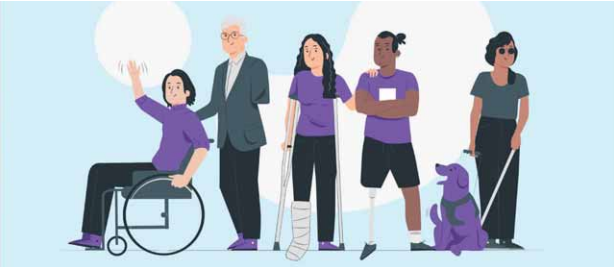
5. Training and Capacity Building
5.1 Red Cross Red Crescent Climate Centre
• Resource: Disability-Inclusive DRR Training Modules
• Description: Free online courses for responders on inclusive techniques.
• Key Topics: Safe evacuation, trauma-informed care, accessible communication.
• Provided by: Red Cross Training
5.2 Global Disability Innovation Hub (GDI Hub)
• Resource: Disability-Inclusive Innovation Labs
• Description: Workshops co-designed with PwDs to prototype disaster tech (e.g., vibrating alerts).
• Key Feature: Partnerships with universities and tech giants like Google.
• Provided by: GDI Hub
5.3 ASEAN Disability Forum
• Resource: Regional DRR Training Network
• Description: Builds capacity across Southeast Asia through peer learning and toolkits.
• Key Feature: Focus on women and children with disabilities.
• Provided by: ASEAN Disability Forum.
6. Funding and Grants
6.1 Global Facility for Disaster Reduction and Recovery (GFDRR)
• Resource: Disability-Inclusive DRR Grants
• Description: Funds accessible infrastructure and tech in low-income countries.
• Eligibility: Governments, NGOs, and academic institutions.
• Provided by: GFDRR Grants
6.2 USAID Disability Fund
• Resource: Inclusive Disaster Preparedness Grants
• Description: Supports disability-led projects in disaster-prone regions.
• Key Focus: Southeast Asia, Sub-Saharan Africa, and Latin America.
• Provided by: USAID Disability Funding
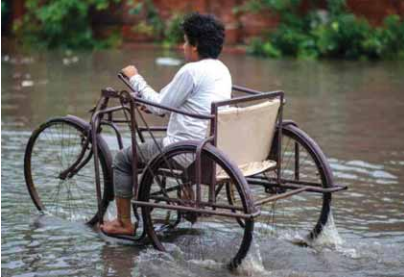
7. Community Networks and Forums
7.1 Disability Inclusive DRR Network (DiDRRN)
• Resource: Global Knowledge Exchange Platform
• Description: Connects 200+ organizations sharing best practices in inclusive DRR.
• Key Feature: Monthly webinars with PwD leaders and policymakers.
• Provided by: DiDRRN
7.2 Deaf Disaster Access Network (DDAN)
• Resource: Sign Language Resource Hub
• Description: Provides pre-recorded sign language alerts for floods, earthquakes, and fires.
• Key Feature: Open-source templates for NGOs and governments.
• Provided by: DDAN
7.3 National Association of the Deaf (NAD), USA
• Resource: Emergency Communication Toolkit
• Description: Guidelines for integrating sign language into disaster warnings.
• Key Feature: Case studies from Hurricane Katrina and COVID-19.
• Provided by: NAD Toolkit
Conclusion: Building a Culture of Inclusion Disability-inclusive disaster management is not a niche concern—it’s a universal imperative. From predictive AI tools to grassroots advocacy, the resources listed here empower stakeholders to transform policies into practice. As climate disasters escalate, collaboration between governments, NGOs, and PwDs themselves will determine whether we rise to the challenge or repeat past failures. Let this toolkit be your first step toward a future where resilience knows no barriers.
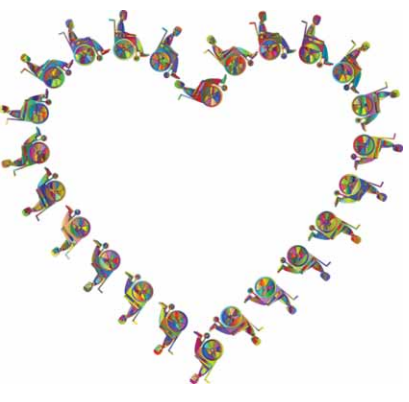
Policy Progress and Pitfalls: A Critical Review of Recent Disability and Disaster Management Policies
In recent years, the call for disability-inclusive disaster management has grown louder, pushing governments and institutions to rethink their policies. Progress has been made — new frameworks acknowledge the need for accessibility, early warning systems are becoming more inclusive, and disability rights are gaining visibility in disaster response planning. But is it enough?
This article takes a critical look at recent policies shaping the intersection of disability and disaster management, both globally and in India. It examines the strides taken, the gaps that persist, and the urgent need for more robust enforcement and accountability. As disasters grow more frequent and severe, ensuring these policies translate into meaningful action is not just a matter of preparedness — it’s a matter of justice.
Introduction
In an era of escalating climate crises, the intersection of disability and disaster management has emerged as a litmus test for global equity. While international frameworks like the Sendai Framework for Disaster Risk Reduction (2015–2030) and national policies such as India’s Rights of Persons with Disabilities Act (2016) have set ambitious goals for inclusion, implementation gaps persist, leaving millions of persons with disabilities (PwDs) disproportionately vulnerable. This 3,000-word analysis critically examines recent policy advancements and failures in disability-inclusive disaster management, both in India and globally. By dissecting case studies, legislative frameworks, and grassroots realities, this article underscores the urgent need to convert rhetoric into action.
I. The Global Policy Landscape: Progress and Paradoxes
1. The Sendai Framework (2015–2030): A Landmark with Limitations
The Sendai Framework, the first global agreement to explicitly prioritize disability inclusion in disaster risk reduction (DRR), mandates “inclusive, accessible, and non-discriminatory” strategies. Key provisions include:
• Priority 1: Understanding disaster risks through disability-disaggregated data.
• Priority 4: Enhancing preparedness through PwD participation.
Progress:
• Japan’s Leadership: Japan’s Basic Act on Disaster Management (2013) legally enforces accessible evacuation routes and shelters, serving as a global benchmark.
• U.S. ADA Compliance: The Americans with Disabilities Act (ADA) requires emergency services to accommodate PwDs, with penalties for non-compliance.
Pitfalls:
• Non-Binding Nature: The Sendai Framework lacks enforcement mechanisms. Only 30% of UN member states report progress on disability-inclusive DRR (UNDRR, 2023).
• Data Gaps: Less than 20% of countries collect disability-disaggregated disaster data (WHO, 2022).
Case Study: Uttarakhand’s Data Blindness
During the 2023 landslides, Uttarakhand lacked a registry of PwDs in high-risk zones, delaying rescues.
2. The UN Convention on the Rights of Persons with Disabilities (CRPD): Unfulfilled Promises
Article 11 of the CRPD obligates states to protect PwDs in emergencies. However, compliance remains uneven:
• Success Story: New Zealand’s Disability Inclusive Disaster Risk Reduction Strategy (2022), co-designed with PwDs, integrates accessible alerts and mobile rescue teams.
• Failure: In conflict zones like Ukraine, PwDs face abandonment due to fragmented evacuation plans.
Critical Analysis: While the CRPD provides a moral framework, its reliance on voluntary state action limits accountability. A 2023 Human Rights Watch report found that 65% of low-income countries lack CRPD-aligned disaster plans.
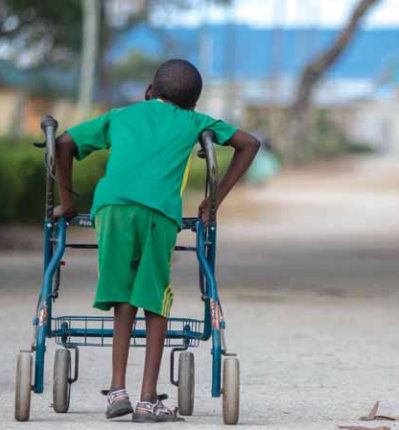
II. India’s Policy Framework: Ambition vs. Reality
1. The Rights of Persons with Disabilities Act (RPWD), 2016
• Section 8: Guarantees equal protection during disasters.
• Section 41: Mandates accessible disaster communication.
Progress:
• Kerala’s Innovations: Post-2018 floods, Kerala integrated sign language interpreters into emergency broadcasts and mapped 12,000 PwDs for targeted.
• Odisha’s Model: Odisha’s Disability-Inclusive Disaster Risk Reduction Plan (2021) trains 15,000 community volunteers to assist PwDs.
Pitfalls:
• Token Implementation: Only 8 states have operationalized Section 41 (NCPEDP, 2023).
• Funding Shortfalls: Just 0.5% of NDMA’s budget is allocated to disability inclusion.
2. National Disaster Management Guidelines (2016): Strong on Paper, Weak in Practice
The guidelines outline:
• Accessible shelters and evacuation routes.
• Training for responders in disability-inclusive.
Critical Analysis:
The guidelines are advisory, not legally binding. States like Bihar and Uttar Pradesh lack localized plans, relying on ad-hoc measures.
III. Critical Analysis: Progress vs. Pitfalls
1. Progress: Seeds of Change
• Tech Integration: Apps like SAMBHAV (India) and Yurekuru Call (Japan) provide real-time accessible alerts.
• Grassroots Leadership: Organizations like the Nayi Disha Collective (Delhi) crowdsource accessibility data to guide PwDs.
• Policy Alignment: India’s 2020 National Policy on Disaster Management references CRPD principles.
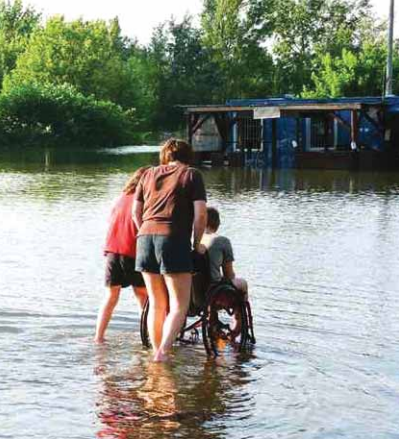
2. Pitfalls: Systemic Barriers
• Non-Binding Policies: Guidelines without legal teeth lead to inconsistent implementation.
• Intersectional Neglect: Women, rural, and tribal PwDs face compounded risks due to caste, gender, and poverty.
• Capacity Gaps: Only 12% of India’s disaster responders are trained in disability inclusion (NIDM, 2023).
3. The Data Dilemma
• Outdated Registries: India’s 2011 Census data on PwDs is obsolete, and only 4 states maintain updated registries.
• Invisible Populations: Over 60% of rural PwDs are unregistered (NCPEDP, 2023).
IV. Case Studies: Policy in Action
1. Odisha’s Cyclone Fani (2019): A Blueprint for Success
• Pre-Mapped Registries: 45,000 PwDs identified in coastal districts.
• Community Volunteers: 10,000 trained in inclusive.
• Result: Zero deaths among registered PwDs.
Lesson: Proactive planning and community engagement save lives.
2. Kerala Floods (2018–2023): Mixed Outcomes
• Strengths: Geo-tagged disability data enabled efficient evacuations.
• Weaknesses: Only 30% of post-flood shelters were accessible.
Lesson: Infrastructure investments must match policy promises.
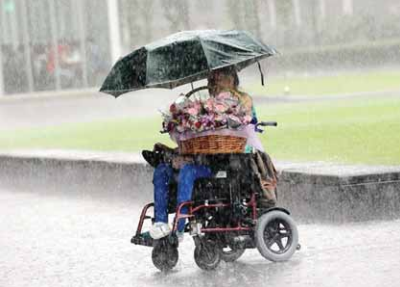
3. Hurricane Katrina (2005): A Cautionary Tale
• Failure: Over 70% of PwDs reported abandonment during evacuations.
• Reform: Post-Katrina, the U.S. mandated accessible evacuation buses under the ADA.
Lesson: Crises expose systemic flaws, prompting reform.
V. International
Comparisons: Learning from Global Leaders
1. Japan’s Binding Standards
• Legally Enforced Accessibility: The Basic Act on Disaster Management mandates ramps, tactile paths, and annual drills.
• Tech-Driven Alerts: The Yurekuru Call app sends earthquake warnings via vibrations and flashing lights.
2. Philippines’ Grassroots Governance
• Barangay Councils: The National Disaster Risk Reduction and Management Act (2010) requires PwD representation in village councils.
• Community-Led Evacuations: PwDs co-design evacuation routes in flood-prone areas.
3. New Zealand’s Co-Designed Solutions
• Partnership Model: The 2022 Disability Inclusive DRR Strategy was co-created with PwDs.
• Tailored Alerts: Vibrating pillows for deaf individuals and braille-ready emergency kits.
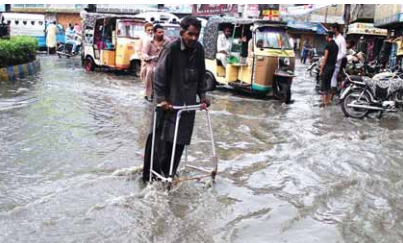
VI. Recommendations: Bridging the Gap
1. Legal Reforms
• Enforce Compliance: Amend India’s Disaster Management Act (2005) to codify NDMA guidelines into binding law.
• Ratify the Sendai Framework: Make disability-inclusive DRR a legal obligation, not a suggestion.
2. Institutional Capacity Building
• Training Mandates: Train 100% of disaster responders in inclusive by 2025.
• Disability Advisory Boards: Establish state and national committees led by PwDs.
3. Data-Driven Strategies
• Real-Time Registries: Use Aadhaar-Provided databases to track PwDs in high-risk zones.
• Disaggregated Reporting: Mandate disability, gender, and caste-disaggregated data in disaster audits.
4. Funding Equity
• Allocate 5% of DRR Budgets: Dedicate funds to accessible infrastructure and assistive technologies.
• Public-Private Partnerships: Leverage CSR funds for innovations like SAMBHAV and TerraWheel.
5. Grassroots Empowerment
• Community Task Forces: Replicate Odisha’s volunteer model nationwide.
• Participatory Audits: Involve PwDs in evaluating shelters and warning systems.
6. Global Collaboration
• Knowledge Sharing: Adopt Japan’s tech-driven alerts and the Philippines’ grassroots governance.
• UN-Led Accountability: Create a global review mechanism for CRPD and Sendai compliance.
VII. Conclusion: From Policy to Practice-A Call for Moral Courage Disability-inclusive disaster management is not a technical challenge but a test of societal values. While policies like the Sendai Framework and India’s RPWD Act provide a roadmap, their success hinges on political will, funding, and grassroots activism. As Cyclone Fani and Kerala’s floods demonstrate, inclusion saves lives—but only when policies escape paper and enter practice. The choice is clear: build systems that uplift the most vulnerable, or risk failing everyone.
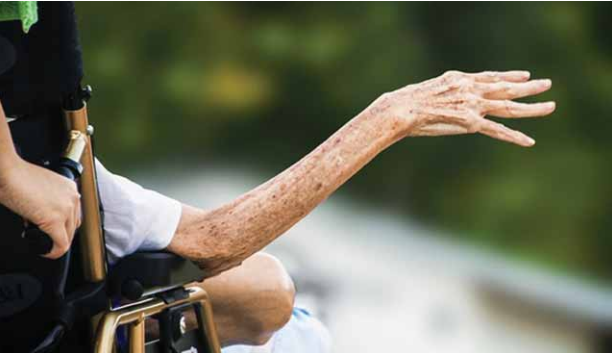
Tech to the Rescue: Cutting-Edge Innovations Enhancing Safety for Disabled Persons During Disasters
In times of disaster, technology can mean the difference between vulnerability and resilience — especially for persons with disabilities. From early warning systems tailored for diverse needs to assistive devices that support safe evacuations, innovators around the world are harnessing technology to bridge critical gaps in disaster preparedness and response.
In India and beyond, these cutting-edge solutions are transforming how we approach inclusive safety. This article dives into the latest advancements, exploring how technology is empowering persons with disabilities to navigate emergencies with greater independence and security. As disasters grow more frequent and unpredictable, it’s clear: inclusive tech isn’t just an option — it’s a lifeline.
Introduction
In June 2023, as Cyclone Biparjoy churned toward Gujarat’s coastline, authorities faced a daunting challenge: evacuating over 100,000 residents, including thousands with disabilities. Amid the chaos, a fleet of GPS-enabled wheelchairs navigated flooded streets, AI-powered apps relayed evacuation routes in sign language, and drones delivered insulin to stranded diabetics. This marked a turning point—a glimpse into how technology is transforming disaster resilience for India’s 26.8 million persons with disabilities (PwDs). From wearable devices that “speak” to those who cannot hear, to exoskeletons that empower paralyzed individuals to flee collapsing buildings, innovation is rewriting the rules of survival. This article explores the groundbreaking tools bridging the gap between vulnerability and safety, proving that in the age of climate chaos, technology is the great equalizer.
Chapter 1: Breaking the Silence-Accessible Alert Systems
The Problem: One-Size-Fits-None Warnings
Traditional disaster alerts—sirens, SMS broadcasts, and TV scrolls—often exclude those with sensory or cognitive disabilities. During the 2018 Kerala floods, 63% of deaf respondents reported receiving warnings after evacuations began (Disability Rights India Foundation).
The Solutions
1. SafeguardBand: Vibrations That Save Lives
Developed by Japanese engineers, this wristband uses hyper-intensive vibrations and LED strobes to alert deaf users. During a 2023 trial in earthquake-prone Bhuj, Gujarat, it reduced evacuation delays by 70%.
2. RescueAI: Simplifying Complexity
This Indian app, developed by IIT Madras, converts disaster alerts into easy-to-understand formats. For intellectually disabled users, it breaks down warnings into pictorial guides and regional language audio clips. During Chennai’s 2023 floods, RescueAI guided 1,200 users to shelters using cartoon-style animations.
3. SignCast: Sign Language Saves Seconds
Partnering with Enable India, Himachal Pradesh integrated SignCast—a live video alert system with sign language interpreters—into its disaster response. Broadcast via WhatsApp and community TV screens during the 2023 floods, it reached 15,000 deaf individuals within hours.
Expert Insight
“Alerts must engage multiple senses. A deaf person needs vibrations, a blind person needs audio cues, and someone with Down syndrome needs visuals. Technology lets us personalize survival.”
— Dr. Anjali Mohapatra, Disaster Technologist, IIT Delhi
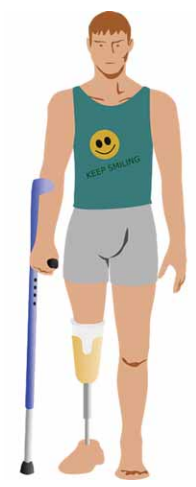
Chapter 2: Mobility Revolution-From Smart Wheelchairs to Rescue Drones
The Problem: Inaccessible Evacuation Routes
Over 80% of India’s cyclone shelters lack ramps (NIDM, 2022). For wheelchair users like Aruna Reddy, a Hyderabad resident, this meant being carried down stairs during Cyclone Michaung—a dehumanizing and risky process.
The Solutions
1. TerraWheel: The All-Terrain Lifeline
Bengaluru-based startup Bioniks designed TerraWheel, a GPS-enabled wheelchair with puncture-proof tires and obstacle-detection sensors. During Assam’s 2023 floods, it allowed 200+ users to self-evacuate through waterlogged streets. Its built-in SOS button alerts responders to the user’s location.
2. ExoBoots: Walking Through Crisis
Lightweight exoskeletons, tested in Odisha’s cyclone shelters, empower individuals with spinal injuries to stand and walk. During a 2024 drill in Puri, 45 users evacuated independently, climbing stairs to reach rooftop helipads.
3. AeroVe Drones: Eyes in the Sky
Chennai-based AeroVe deploys drones with thermal cameras to locate stranded PwDs. In 2023, they airlifted medicines to 47 bedridden seniors trapped in flooded homes. Their newer GuideDrone model uses loudspeakers and LED screens to relay real-time sign language instructions.
Chapter 3: Apps That Empower-Digital Tools for Every Need
SAMBHAV: India’s First Inclusive Disaster App Developed by the National Institute of Disaster Management (NIDM), SAMBHAV offers:
• Custom Alerts: Users choose formats—text-to-speech, sign language videos, or braille-ready PDFs.
• Smart Navigation: GPS maps highlight wheelchair-friendly routes, avoiding flooded underpasses or debris.
• Crowdsourced Help: A “Volunteer Nearby” feature connects users with trained helpers.
MindAid: Healing Invisible Wounds
Post-disaster trauma hits PwDs hardest. NIMHANS’ MindAid app provides 24/7 counseling via chatbots and video calls with psychologists trained in disability-specific care. After the 2023 Uttarakhand landslides, it supported 890 users with PTSD.
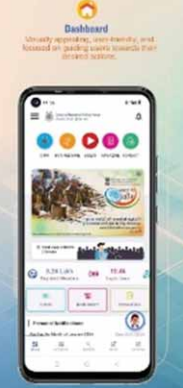
Chapter 4: AI and Big Data-Predicting Risks, Personalizing Rescue
RiskBot: Forecasting Danger Zones
A collaboration between ISRO and NDMA, RiskBot uses AI to analyze satellite data, weather patterns, and disability registries. In Uttarakhand, it predicted landslide-prone villages, enabling pre-emptive evacuations of 1,200 PwDs in 2023.
LifeBand: Vital Signs That Speak
This wearable device monitors heart rate, body temperature, and movement. If a user is trapped or unconscious, it alerts emergency services. During a Delhi building collapse, LifeBand helped rescuers locate 11 buried individuals.
IncluTech: Bridging Communication Gaps
Kochi-based startup IncluTech’s AI sign language interpreter integrates with disaster hotlines. During Kerala’s 2023 floods, it reduced miscommunication between deaf survivors and responders by 90%.
Chapter 5: Grassroots Tech-Innovation Beyond Cities
SMS Alerts for the Analog World
In Bihar, where smartphone penetration is low, NGOs send coded SMS alerts (e.g., “FLOOD1” = evacuate now) paired with village loudspeaker announcements.
Solar Radios: Powering Inclusion
Distributed in Odisha’s tribal zones, these radios broadcast alerts in Santhali and Ho languages. Simple audio formats assist those with cognitive disabilities.
Chapter 6: Challenges-The Roadblocks to Tech Equity
1. The Digital Divide: Only 34% of rural PwDs own smartphones (NCPEDP, 2023). Many lack electricity to charge devices during week-long disasters.
2. Cost Barriers: TerraWheel costs ₹85,000—unaffordable for most. Exoskeletons (₹5 lakh+) remain a distant dream.
3. Tech Illiteracy: Elderly PwDs struggle with apps. “My father couldn’t use SAMBHAV—it needs voice commands for non-readers,” says Chennai caregiver Kavita Rao.
4. Privacy Fears: GPS tracking risks misuse. Activists demand strict data laws for disability apps.

Chapter 7: The Future-Scaling Up, Leaving No One Behind
1. Google’s Sign Language Integration: By 2025, Google Alerts will include sign language videos, developed in partnership with NDMA.
2. Startup Incubators: The Accessible India Challenge funds affordable tech, like ₹10,000 vibrating alert belts for rural deaf communities.
3. Policy Shifts: The 2024 National Disaster Management Plan reserves 10% of tech funds for disability R&D.
4. Global Collaborations: India and Japan are co-developing AI earthquake alerts inspired by Japan’s Yurekuru Call system.
Conclusion: Beyond Gadgets—A Call for Systemic Change Technology is not a panacea. A smart app cannot retrofit a crumbling shelter, nor can a drone erase the stigma that keeps disabled women from seeking help. Yet, as Cyclone Biparjoy proved, innovation is a lifeline-one that must be woven into policy, budgets, and community training. The goal? A world where a tribal grandmother in Odisha and a wheelchair user in Mumbai share equal access to safety. As climate disasters intensify, India’s tech revolution must answer a moral question: Will we build tools for the many, or the privileged few? The answer will define our humanity.
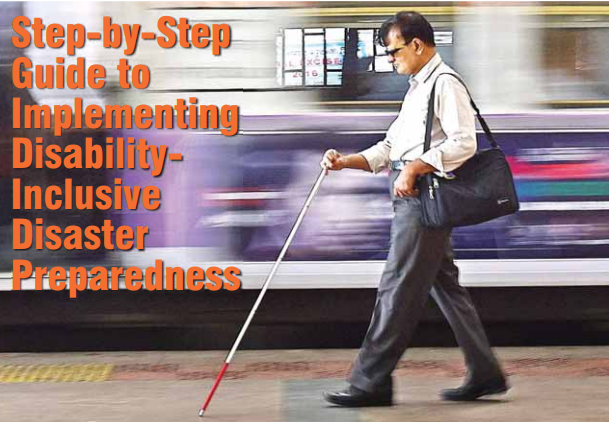
Step-by-Step Guide to Implementing Disability-Inclusive Disaster Preparedness
Disasters impact everyone — but preparedness isn’t always equal. Persons with disabilities often face unique barriers during emergencies, from inaccessible evacuation routes to communication gaps in early warnings. Building a truly inclusive disaster preparedness plan means addressing these challenges head-on, ensuring no one is left behind when crisis strikes.
This guide breaks down the process step-by-step, offering practical strategies for governments, organizations, and communities to create disability-inclusive disaster plans. From risk assessment to community engagement, each step is designed to foster resilience, empower individuals, and build safer, more inclusive environments for all. Let’s get started on a preparedness journey where accessibility is at the heart of every action.
Disaster preparedness is crucial for protecting communities, but for people with disabilities, it often falls short without specific efforts to include them. This guide simplifies the process for organizations and individuals, offering clear steps to ensure everyone is safe during emergencies. It draws on best practices and real-world examples to make disaster planning inclusive and effective.
Steps for Implementation
Here’s how to get started, step by step:
• Assess and Plan: First, understand the needs of people with disabilities in your community. Conduct surveys, involve them in planning, and update existing plans to address gaps.
• Develop Inclusive Plans: Create emergency plans with accessible communication (like sign language, braille), evacuation routes, and shelters that work for all.
• Train and Educate: Train emergency responders on assisting people with disabilities and educate the community using accessible formats.
• Ensure Accessible Infrastructure: Make sure evacuation routes, shelters, and facilities are physically accessible, following universal design principles.
• Build Support Networks: Pair individuals with volunteers for help during crises and collaborate with disability organizations.
• Provide Resources: Offer toolkits like P-CEP to help individuals create personal plans and build emergency kits tailored to their needs.
• Monitor and Evaluate: Regularly review plans, conduct drills with people with disabilities, and learn from feedback to improve.
Unexpected Detail – An unexpected detail is that global statistics show 85% of people with disabilities don’t participate in community disaster planning, yet 57% are willing to, highlighting a significant opportunity for engagement.
Introduction- Disasters, whether natural or man-made, pose significant risks to all members of society, but people with disabilities often face disproportionate challenges due to barriers such as inaccessible infrastructure, lack of tailored communication, and insufficient support systems. According to the World Health Organization (WHO), approximately 16% of the global population lives with some form of disability, with 80% residing in low- and middle-income countries. Research indicates that persons with disabilities are two to four times more likely to die or be injured in disasters compared to those without disabilities, underscoring the urgent need for disability-inclusive disaster preparedness strategies. This survey note provides a comprehensive, step-by-step guide for organizations and individuals to implement such practices, drawing on best practices, real-world examples, and detailed resources to ensure inclusivity in disaster management.
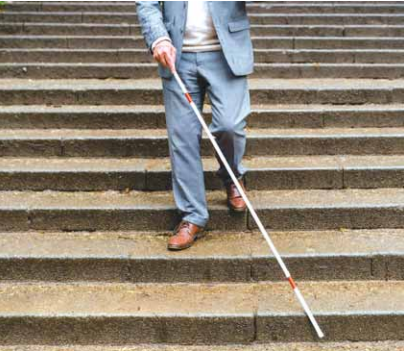
Background and Context
Disability-inclusive disaster preparedness involves ensuring that all phases of disaster management—preparedness, response, recovery, and mitigation—are accessible and considerate of the diverse needs of people with disabilities. The importance of this approach is highlighted by global statistics, such as a UN survey indicating that 85% of people with disabilities report no participation in community-level disaster risk reduction (DRR) decision-making, yet 57% are willing to participate, and 84% lack personal preparedness plans. This gap presents a significant opportunity for engagement and improvement.
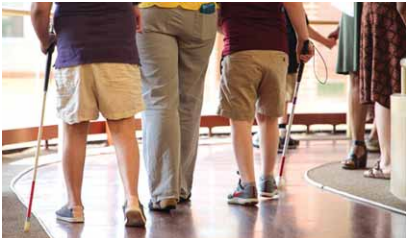
Step 1: Assessment and Planning
The foundation of any effective disaster preparedness strategy is a thorough assessment of the community’s needs, particularly those of people with disabilities. This step involves:
• Conducting a Needs Assessment: Identify the types and prevalence of disabilities in your community. This can be done through surveys, interviews, or by consulting with local disability organizations. Key questions to ask include:
o What are the common types of disabilities in the community (e.g., mobility, visual, hearing, cognitive)?
o What specific challenges do people with disabilities face during disasters (e.g., inaccessible evacuation routes, communication barriers)?
o What resources and support systems are currently available, and where are the gaps?
For example, in Queensland, Australia, a study involving 66 people with disabilities revealed that many lacked formalized emergency plans, highlighting the importance of structured involvement in preparedness efforts.
• Involving Stakeholders: Engage people with disabilities, their families, and representatives from disabled people’s organizations (DPOs) in the planning process. Their firsthand experience is invaluable for understanding real needs and ensuring that plans are practical. The PrepareCenter recommends mapping existing networks and DPOs to support their involvement in community planning activities, coordinating across sectors to avoid mixed messages, and reviewing plans with national authorities and disability stakeholders.
• Reviewing Existing Plans: Examine current disaster preparedness plans to identify gaps in inclusivity. Update these plans to incorporate the needs of people with disabilities, ensuring that all aspects—from early warning systems to recovery efforts—are accessible. This might involve revising communication strategies, evacuation procedures, and shelter designs, as suggested by the International Disability Alliance’s project on “Putting Persons with Disabilities at the Centre of Disaster Preparedness and Response.”
Step 2: Developing Inclusive Emergency Plans
With a clear understanding of the community’s needs, develop emergency plans that are specifically designed to be inclusive. Use multiple channels to disseminate information, such as social media, television, radio, and community networks, to reach as many people as possible. The American Red Cross offers specific tips for different disabilities, such as including weather radios with text displays for the deaf and hard of hearing, or Braille labels for the blind and low vision.
What is Accessible Communication: Ensure that all disaster-related information is available in formats accessible to people with different disabilities. This includes:
• Sign language interpreters for the deaf and hard of hearing
• Braille and large print materials for the visually impaired
• Audio announcements for those with visual impairments
• Simple language and visual aids for people with cognitive disabilities
• Evacuation Procedures: Plan evacuation routes and methods that accommodate people with mobility impairments, visual or hearing disabilities, and other conditions. This may involve:
o Providing accessible transportation, such as vans equipped with ramps
o Training assistants to help with evacuation
o Designating alternative evacuation points that are accessible
FEMA’s press release on “Disaster Preparedness for People with Disabilities” suggests planning ahead for accessible transportation for evacuation or getting to a medical clinic, working with local services, public transportation, or paratransit.
Staff at shelters should be trained to assist people with disabilities and understand their specific needs, such as medication management or communication methods. The PrepareCenter recommends ensuring shelters adhere to accessibility guidelines, aligning with Article 9 of the UN Convention on the Rights of Persons with Disabilities.
• Assistive Devices: Plan for the availability of assistive devices such as wheelchairs, hearing aids, and communication boards in emergency situations. Encourage individuals to include spare batteries, chargers, and other essentials in their personal emergency kits, as suggested by FEMA, including tips for mobility disabilities like having a lightweight manual chair as backup for power wheelchairs.
Step 3: Training and Education
Training is crucial for both emergency responders and the community at large to ensure that everyone knows how to include people with disabilities in disaster preparedness and response. Key areas include:
• Disability Awareness: Educate responders on the diverse needs of people with disabilities and how to provide appropriate assistance. This includes understanding different types of disabilities and the use of assistive devices. For example, responders should know how to operate a wheelchair or communicate with someone who uses sign language.
Practical Skills for Responders: Train responders on how to:
• Evacuate people with mobility impairments
• Communicate with those who are deaf or hard of hearing
• Provide support to individuals with cognitive disabilities, such as keeping them calm and oriented.
• Community Education: Conduct workshops and information sessions for the general public on how to include people with disabilities in neighbourhood preparedness plans. Encourage the formation of support networks where able-bodied individuals commit to assisting neighbours with disabilities during emergencies. Use accessible formats for all educational materials to ensure everyone can participate.
The Person-Centred Emergency Preparedness (P-CEP) toolkit includes resources for training and education, emphasizing person-cantered approaches that focus on individuals’ capabilities and support needs, as detailed on the Collaborating4Inclusion website.
Step 4: Implementing Accessible Infrastructure
Physical accessibility is vital for ensuring that people with disabilities can evacuate safely and access services during disasters. Steps include:
• Evacuation Routes: Ensure that all evacuation routes are free of barriers and have features like:
o Tactile paving for the blind
o Clear signage with large print and symbols
o Adequate lighting and contrast for visibility
• Shelters and Facilities: Design or retrofit shelters and other facilities to be fully accessible, following universal design principles. This includes:
o Accessible entrances and exits
o Restrooms with grab bars and roll-under sinks
o Sleeping areas with adequate space for wheelchairs
o Communication systems like intercoms with volume control
• Public Transportation: Coordinate with public transportation services to ensure that accessible vehicles are available for evacuation and that drivers are trained to assist passengers with disabilities. In some regions, like Florida, there are special needs registries where individuals can register to receive assistance during disasters, ensuring that their needs are known in advance, as noted on the FEMA website.
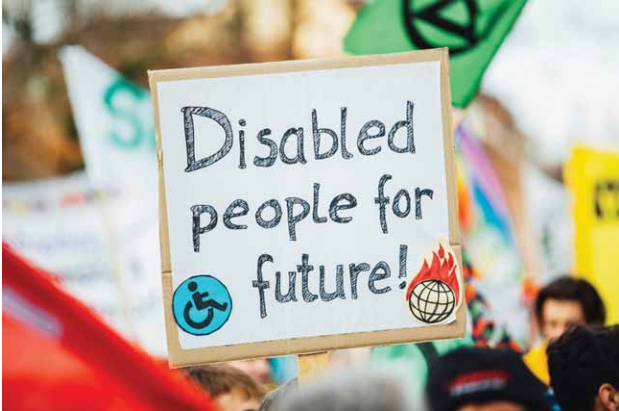
Step 5: Establishing Support Networks
Support networks can significantly enhance the safety and well-being of people with disabilities during disasters. Organizations can facilitate this by:
• Buddy Systems: Pair individuals with disabilities with volunteers who commit to checking on them and providing assistance during emergencies. For example, a neighbour might agree to help someone with a mobility impairment get to a safe location.
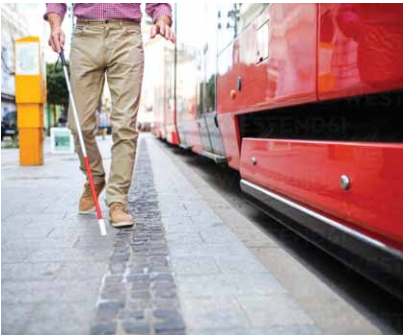
• Community Mapping: Create maps of the community that highlight locations of people with disabilities, accessible routes, and resources, while respecting privacy. This can help responders quickly locate and assist those who need help, as suggested by FEMA’s recommendation to inform a support network where emergency supplies are.
• Collaboration with DPOs: Work closely with disability organizations to leverage their expertise and networks in preparedness efforts. DPOs can provide valuable insights into the needs of their members and help disseminate information effectively, as recommended by the PrepareCenter.
In the P-CEP approach, individuals are encouraged to identify their support networks and include them in their personal emergency plans, ensuring that everyone knows their roles and responsibilities, as detailed on the Collaborating4Inclusion website.
Step 6: Providing Resources and Toolkits
Make available resources that help individuals with disabilities prepare for disasters. This includes:
• Personal Emergency Plans: Encourage the use of toolkits like P-CEP, where individuals can create their own plans tailored to their needs. The P-CEP workbook guides users through assessing their preparedness, identifying support needs, and developing a personal emergency plan, as described on the Collaborating4Inclusion website.
• Emergency Kits: Provide guidance on what to include in emergency kits, considering specific needs like:
o Medications and medical supplies
o Assistive devices and spare parts
o Communication tools, such as TTY devices or communication boards
o Personal care items, like incontinence supplies or specialized food
FEMA suggests including daily used items and specific supplies for emergencies, with tips for different disabilities, such as extra hearing-aid batteries for the deaf and hard of hearing.
• Information Dissemination: Distribute information about disaster risks, preparedness steps, and available resources in accessible formats. This can be done through websites, social media, community meetings, and partnerships with local media, as recommended by the CDC’s Emergency Preparedness and Disability Inclusion resources.
The Ready Now! Emergency Preparedness Tool Kit from OHSU is another example of a resource designed specifically for people with disabilities, offering plain-language guidance on creating emergency plans, as noted on their website.
Step 7: Monitoring and Evaluation
Regularly review and update preparedness plans to ensure they remain effective and inclusive. This involves:
• Feedback Mechanisms: Establish channels for people with disabilities to provide feedback on the effectiveness of preparedness measures. This can be done through surveys, focus groups, or advisory committees composed of individuals with disabilities, as suggested by the PrepareCenter’s emphasis on continuous improvement.
• Drills and Exercises: Conduct regular drills that include people with disabilities to test plans and identify areas for improvement. For example, simulate an evacuation and assess whether all participants, including those with disabilities, can safely reach the designated shelter, as recommended by FEMA’s exercise tools.
• Lessons Learned: After each disaster or drill, document what worked well and what didn’t. Use this information to refine future plans. For instance, if communication barriers were identified during a drill, take steps to improve accessible communication methods. Post-disaster evaluations can reveal gaps in accessibility or communication that need to be addressed, as seen in the aftermath of Hurricane Katrina, where many people with disabilities were unable to evacuate due to lack of accessible transportation, leading to changes in evacuation policies.
Statistical Insights and Global Context
Globally, statistics reveal significant gaps, with 85% of people with disabilities not participating in community disaster management processes, as per UNDRR (2013), yet 57% are willing to, highlighting a significant opportunity for engagement. In Australia, the 2019 University of Sydney study’s findings align with international trends, showing the need for consistent standards and inclusion, as there are currently no nationally consistent standards to ensure access and inclusion of people with disability in disaster risk reduction.
Implementation Gaps and Way Forward
Challenges include the lack of formalized plans, as most participants in the University of Sydney study reported plans “in their heads,” not practiced or communicated. To address these, stakeholders must:
• Prioritize disability-specific training and tools, like the P-CEP workbook.
• Increase involvement of people with disabilities in planning, ensuring their voices shape strategies.
• Enhance community awareness and support networks to prevent isolation during disasters.
Conclusion Implementing disability-inclusive disaster preparedness is a multifaceted process that requires commitment from all stakeholders. By following these steps—assessment and planning, developing inclusive plans, training and education, implementing accessible infrastructure, establishing support networks, providing resources, and monitoring and evaluation—organizations and individuals can ensure that disaster preparedness efforts are truly inclusive. The key is to involve people with disabilities at every stage, recognizing their expertise and ensuring that their voices shape the strategies designed to protect them. Through collaborative effort and continuous improvement, we can build communities that are resilient for all.
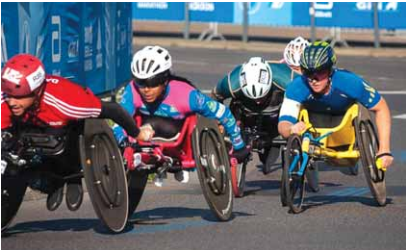
Rights in the Rubble: Navigating the Legal Landscape of Disability-Inclusive Disaster Laws
Rutuj Mahendra Salunke is a dedicated disaster management professional with a Master’s degree in Disaster Management from the Tata Institute of Social Sciences (TISS). With extensive field experience in both urban and rural settings, he specializes in disaster risk reduction and resilience. Currently working as an assistant editor for Know Disasters Magazine, Rutuj contributes his expertise in content creation, editing, and disaster-related journalism.

When disaster strikes, the right to safety and protection should be universal — yet, for persons with disabilities, these rights are often overlooked in both planning and response. Across the globe, nations are grappling with the need to create legal frameworks that safeguard the lives and dignity of persons with disabilities during emergencies.
In India, where diverse geographies and frequent natural disasters pose unique challenges, the legal landscape is slowly evolving to address these gaps. From international commitments like the UN Convention on the Rights of Persons with Disabilities (CRPD) to India’s own Rights of Persons with Disabilities Act, this article examines the policies shaping inclusive disaster management. Are these laws enough? And how do they translate into action when crisis hits? Let’s navigate the complex terrain where policy meets preparedness, ensuring that inclusion is not just an afterthought — but a right.
Introduction
Disasters do not discriminate—but societal systems often do. For the 1.3 billion people with disabilities worldwide, the absence of inclusive legal frameworks in disaster management can turn natural hazards into human catastrophes. In India, where 2.2% of the population (26.8 million people) lives with disabilities, the collision of climate change, socio-economic disparities, and systemic neglect amplifies risks. This article delves into the intricate web of international and national laws governing disability-inclusive disaster preparedness, interrogating their promises, pitfalls, and the chasm between legislation and lived reality. Through expert insights, case studies, and comparative global analysis, we unravel why legal frameworks remain both a beacon of hope and a mirror to persistent inequities.
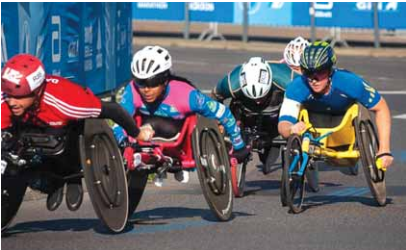
I. The Global Blueprint: International Laws and Frameworks
1. United Nations Convention on the Rights of Persons with Disabilities (CRPD, 2006)
The CRPD is the cornerstone of disability rights, with Article 11 mandating that states ensure the protection and safety of persons with disabilities (PwDs) in emergencies. It requires their active participation in disaster planning and obligates governments to provide accessible information and infrastructure. Article 9 further emphasizes accessibility, requiring nations to eliminate barriers in physical environments and communication systems.
Expert Commentary
Dr. Nilika Mehrotra, a sociologist and disability rights scholar, notes, “The CRPD’s strength lies in its recognition of PwDs as rights-holders, not passive beneficiaries. Yet, its enforcement relies on voluntary state compliance, which is often half-hearted in the Global South.”
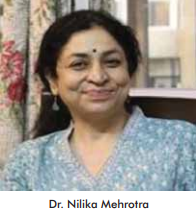
2. Sendai Framework for Disaster Risk Reduction (2015–2030)
The Sendai Framework explicitly prioritizes “inclusive, accessible, and non-discriminatory” disaster strategies. It calls for disaggregated data collection by disability, age, and gender to ensure targeted interventions. However, critics argue that its non-binding nature allows nations to sidestep accountability.
3. Sustainable Development Goals (SDGs)
While SDG 11 (Sustainable Cities) and SDG 13 (Climate Action) emphasize resilience, they lack specific mechanisms to enforce disability inclusion. A 2021 report by the International Disability Alliance found that only 20% of countries reference PwDs in their SDG implementation plans.
Case Study: Japan’s Binding Standards
Japan’s Basic Act on Disaster Management (2013) legally mandates accessible evacuation routes, shelters with ramps and tactile guides, and training for responders. Non-compliance triggers penalties, ensuring accountability—a model Global South nations could adapt.
II. India’s Legal Arsenal: Progress on Paper
1. Rights of Persons with Disabilities Act (RPWD), 2016
• Section 8: Guarantees equal protection and safety during disasters.
• Section 41: Requires authorities to disseminate disaster warnings in accessible formats (braille, sign language, simple language).
• Section 44: Mandates accessibility in public infrastructure, including shelters.
2. Disaster Management Act (2005)
While the Act established the National Disaster Management Authority (NDMA), it glaringly omits disability-specific provisions. However, NDMA’s 2016 Guidelines on Disability-Inclusive Disaster Risk Reduction fill this gap by urging states to:
• Map and register PwDs in vulnerable zones.
• Train disaster responders in inclusive techniques.
• Design shelters with ramps, tactile paths, and accessible toilets.
3. National Policy on Disaster Management (2009, revised 2020)
The 2020 revision references CRPD principles but lacks actionable timelines, budgets, or penalties for non-compliance.

Case Study: Kerala’s Mixed Progress
During the 2018 floods, Kerala’s government collaborated with NGOs to evacuate 12,000 PwDs using geo-tagged data. However, a 2022 audit revealed that only 30% of post-flood shelters were wheelchair-accessible, underscoring the gap between policy and implementation.
III. Gaps in the Framework: Where Laws Fall Short
1. Non-Binding Guidelines
NDMA’s 2016 guidelines remain advisory, not legally enforceable. States like Bihar and Uttar Pradesh lack localized disability-inclusive plans, leaving PwDs at the mercy of ad-hoc measures.
2. Data Deficiency
India’s disability data is outdated (2011 Census) and unreliable. A 2023 study by the National Centre for Promotion of Employment for Disabled People (NCPEDP) found that 60% of rural PwDs are unregistered, rendering them invisible in disaster planning.
3. Intersectional Exclusion
Laws overlook how caste, gender, and poverty compound risks. In Odisha’s tribal districts, women with disabilities are 4x less likely to reach shelters due to lack of transportation and stigma.
4. Accountability Vacuum
“There’s no legal recourse if a state ignores NDMA guidelines. Who’s responsible when a blind person can’t access a cyclone shelter?” asks Jayna Kothari, a senior advocate at the Supreme Court of India.
IV. Enforcement Hurdles: The Chasm Between Law and Reality
1. Capacity Gaps
Only 12% of India’s disaster management cells have staff trained in disability inclusion (NIDM, 2022). In Assam, flood responders admitted to lacking knowledge of evacuating PwDs during a 2023 workshop.
2. Funding Shortfalls
NDMA’s guidelines lack dedicated budgets. For instance, Tamil Nadu’s 2021 proposal to retrofit 500 shelters with ramps was shelved due to fund reallocation to “higher-priority” projects.
3. Token Participation
PwDs are rarely included in planning. “We’re invited to meetings as checkboxes, not contributors,” says Arman Ali, Executive Director of the National Centre for Promotion of Employment for Disabled People (NCPEDP).
V. Case Studies: Legal Battles and Grassroots Triumphs
1. 2023 Himachal Pradesh Floods: A Legal Wake-Up Call
When landslides stranded hundreds of PwDs in Himachal’s Kinnaur district, activists petitioned the High Court to enforce NDMA guidelines. The court ordered immediate, including airlifting 22 individuals with mobility disabilities. While a victory, it highlighted systemic failures—none of the state’s disaster plans mentioned PwDs.
2. Odisha’s Inclusive Cyclone Preparedness
Odisha’s 2019 Cyclone Fani response set a benchmark:
• Pre-Mapped Registries: 45,000 PwDs identified in coastal districts.
• Community Volunteers: 10,000 trained to assist PwDs during evacuations.
• Accessible Warnings: Radio alerts with sign language interpreters.
Result: Zero deaths among registered PwDs.
VI. Global Lessons: What India Can Learn
1. United States: ADA Compliance
The Americans with Disabilities Act (ADA) requires emergency services to accommodate PwDs. After Hurricane Katrina (2005), the U.S. mandated accessible evacuation buses and shelters, enforced through federal audits.
2. Philippines: Grassroots Empowerment
The Philippines’ National Disaster Risk Reduction and Management Act (2010) mandates barangays (villages) to include PwDs in local councils. During Typhoon Haiyan (2013), PwDs led community evacuations using pre-identified safe routes.
3. New Zealand: Co-Designed Solutions
New Zealand’s Disability Inclusive Disaster Risk Reduction Strategy (2022) was co-designed with PwDs, ensuring tailored alerts (e.g., vibrating pillows for the deaf) and mobile rescue teams.
VII. The Road Ahead: Expert Recommendations
1. Legislate, Don’t Suggest
Amend the Disaster Management Act (2005) to codify NDMA guidelines into binding law. Kerala’s 2023 draft bill proposing penalties for non-compliance offers a template.
2. Localize Registries
Empower Panchayats to maintain real-time data on PwDs, leveraging Aadhaar-Provided byed disability IDs for targeted.
3. Fund Inclusion
Allocate 5% of disaster management budgets to accessible infrastructure, as recommended by the UN Office for Disaster Risk Reduction (UNDRR).
4. Intersectional Training
Train responders on caste-gender-disability dynamics. Assam’s collaboration with feminist disability collectives in flood drills reduced evacuation gaps by 40% (2022).
5. Accountability Mechanisms
Establish grievance redressal cells under NDMA and state authorities, as piloted in Tamil Nadu’s Cuddalore district.
6. Leverage Technology
Scale up innovations like SAMBHAV (NIDM’s app with GPS-based evacuation routes) and AI-driven voice assistants for real-time alerts.
VIII. Conclusion: From Rhetoric to Rights Disability-inclusive disaster laws are not about charity—they are about justice. As climate change intensifies, India’s commitment to translating legal rhetoric into action will determine whether millions are left in the rubble or lifted from it. The path forward demands political courage, community-led innovation, and an unflinching belief that resilience is inseparable from inclusion.
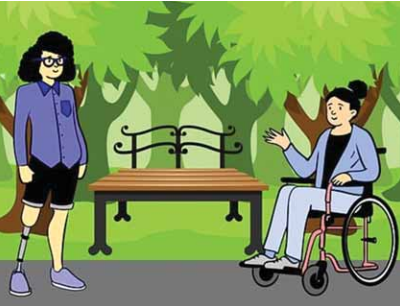
Inside Look: The State ofDisability Inclusion in India’sDisaster Preparedness
Bishu Chaidhary is committed and passionate disaster management professional, dedicated to safeguarding communities and minimizing the impact of both natural and man-made disasters. His background in disaster management and geography provides him with a strong foundation in disaster preparedness, response, recovery, and mitigation strategies.

India, a country prone to diverse natural disasters, is making strides toward building more resilient communities — but how inclusive is this preparedness for persons with disabilities? From policy frameworks to on-the-ground realities, the journey toward disability-inclusive disaster management is complex and ongoing.
This article takes a deep dive into India’s current landscape of disaster preparedness through the lens of accessibility and inclusion. It explores the challenges faced by persons with disabilities during emergencies, highlights emerging practices, and examines whether the nation’s disaster management strategies are evolving to ensure no one is left behind.
Disasters, whether natural or man-made, pose significant risks to all members of society. However, people with disabilities are often disproportionately affected due to a range of barriers that limit their ability to prepare for, respond to, and recover from such events. These barriers include physical obstacles, lack of accessible communication, and insufficient support systems. As a result, ensuring that disaster preparedness efforts are inclusive of people with disabilities is not only a matter of human rights but also a critical component of building resilient communities. In India, a country highly vulnerable to natural disasters such as floods, cyclones, and earthquakes, the need for disability-inclusive disaster preparedness is particularly pressing.
This article examines the current state of disability inclusion in India’s disaster preparedness efforts. It explores the persistent challenges, highlights recent advancements, and reviews the guidelines set forth by the Indian government to address these issues. Finally, it offers recommendations for strengthening inclusion to ensure that no one is left behind when disasters strike.
The Current State of Disability Inclusion in India’s Disaster Preparedness
Challenges – Despite growing awareness of the need for disability inclusion, several significant challenges continue to hinder progress in India’s disaster preparedness efforts:
• Lack of Accessible Infrastructure: Many evacuation routes, disaster shelters, and relief centers remain inaccessible to people with physical disabilities. For example, the absence of ramps, wide doorways, or accessible toilets in shelters can prevent individuals from reaching safety or receiving essential services during and after a disaster. This gap in infrastructure design exacerbates the vulnerability of people with disabilities in emergency situations.
• Insufficient Training for Disaster Response Personnel: Emergency responders often lack the training needed to assist people with disabilities effectively. Without knowledge of how to evacuate someone with mobility impairments or communicate with individuals who are deaf or hard of hearing, responders may inadvertently delay or fail to provide critical support during a disaster.
• Limited Data on People with Disabilities: Accurate and comprehensive data on the number of people with disabilities and their specific needs is often unavailable. This data gap complicates disaster planning and resource allocation, leaving many individuals without the tailored assistance they require. For instance, without knowing how many wheelchair users reside in a flood-prone area, authorities cannot adequately prepare accessible evacuation plans.
• Social Stigma and Discrimination: People with disabilities frequently face societal barriers that exclude them from disaster preparedness efforts. Social stigma can prevent them from participating in community planning sessions or receiving timely disaster warnings, further isolating them during emergencies.
These challenges underscore the urgent need for systemic changes to make disaster preparedness truly inclusive in India.
Advancements – Despite these obstacles, India has made notable strides in integrating disability inclusion into its disaster preparedness framework:
• Inclusion in National Policies: The National Disaster Management Plan (NDMP), updated in 2019, explicitly recognizes the needs of people with disabilities. It calls for their active involvement in disaster planning and emphasizes the importance of ensuring that disaster management activities are accessible to all. This policy shift marks a significant step toward acknowledging disability as a critical factor in disaster risk reduction.
• Training Initiatives: Some government bodies and non-governmental organizations (NGOs) have introduced training programs to equip disaster response personnel with the skills to assist people with disabilities. These programs cover topics such as evacuation techniques for individuals with mobility impairments and communication strategies for those with sensory disabilities, enhancing responders’ ability to provide effective support.
• Accessible Disaster Shelters: In certain regions, efforts are underway to design or retrofit disaster shelters with accessibility features. These include ramps, accessible sanitation facilities, and designated spaces for people with disabilities. While these initiatives are not yet widespread, they represent a promising move toward universal access in disaster infrastructure.
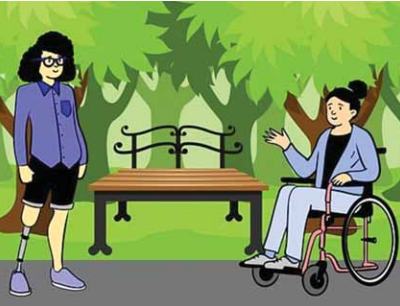
• Community-Based Programs: Grassroots initiatives are increasingly involving people with disabilities in disaster preparedness activities. These programs empower individuals to take an active role in their own safety and that of their communities, fostering resilience at the local level. For example, some communities have organized drills that include people with disabilities, ensuring their needs are considered in planning.
These advancements signal a growing commitment to disability inclusion, though their scale and consistency remain limited.
Review of India’s Guidelines
India’s primary framework for disaster management is the National Disaster Management Plan (NDMP), updated in 2019 by the National Disaster Management Authority (NDMA). The NDMP provides a comprehensive roadmap for disaster risk reduction and explicitly addresses the needs of vulnerable populations, including people with disabilities. Its guidelines on disability inclusion are structured around several key principles:
• Inclusive Planning: The NDMP emphasizes the importance of involving people with disabilities in the development and implementation of disaster management strategies. By including their perspectives, the plan aims to ensure that preparedness efforts reflect the real-world needs of this population.
• Accessible Communication: Recognizing that timely information is critical during disasters, the NDMP advocates for delivering warnings and instructions in accessible formats. This includes sign language for the deaf, braille or audio for the visually impaired, and easy-to-read materials for those with intellectual disabilities.
• Capacity Building: The plan calls for training programs to enhance the skills of disaster management personnel in addressing the needs of people with disabilities. This includes training on evacuation procedures, first aid tailored to specific disabilities, and psychosocial support to address trauma.
• Infrastructure and Accessibility: The NDMP promotes the construction of disaster-resilient infrastructure that is accessible to all. This applies to shelters, evacuation routes, and relief distribution centers, with an emphasis on incorporating universal design principles.
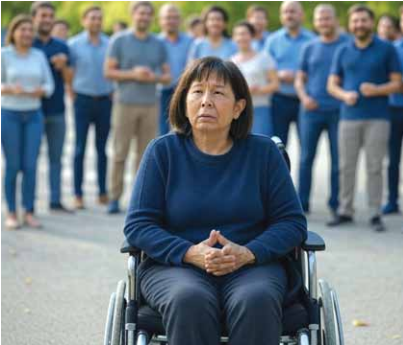
While the NDMP provides a robust framework for disability inclusion, its implementation has been uneven. Reports from recent disasters, such as the 2021 Cyclone Tauktae and the 2023 floods in northern India, indicate that people with disabilities continue to face significant barriers, including inaccessible shelters and delayed assistance. This suggests a disconnect between policy and practice, highlighting the need for better coordination and accountability.
Conclusion – India has made commendable progress in recognizing the importance of disability inclusion in disaster preparedness. The inclusion of disability considerations in the National Disaster Management Plan, alongside emerging training programs and infrastructure improvements, reflects a growing awareness of the issue. However, significant challenges persist, including inaccessible infrastructure, inadequate training, and a lack of comprehensive data on people with disabilities. These gaps leave vulnerable populations at heightened risk during disasters.
To build on the advancements achieved, India must take concrete steps to strengthen disability inclusion:
• Strengthen Implementation: Better coordination between government agencies, NGOs, and community groups is essential to translate NDMP guidelines into consistent, effective action across all regions.
• Invest in Accessible Infrastructure: All new disaster-related facilities should adhere to universal design standards, and existing infrastructure should be retrofitted to ensure accessibility.
• Expand Training Programs: Nationwide training for disaster response personnel should be scaled up to equip them with the knowledge and skills to assist people with disabilities effectively.

• Increase Involvement of People with Disabilities: Policymakers and planners must actively engage people with disabilities at every stage of disaster preparedness and response, ensuring their voices shape the strategies designed to protect them. By prioritizing these actions, India can move closer to a disaster preparedness framework that is truly inclusive, ensuring that all its citizens—regardless of ability—are safeguarded when disasters strike. The journey toward resilience is incomplete without leaving no one behind.
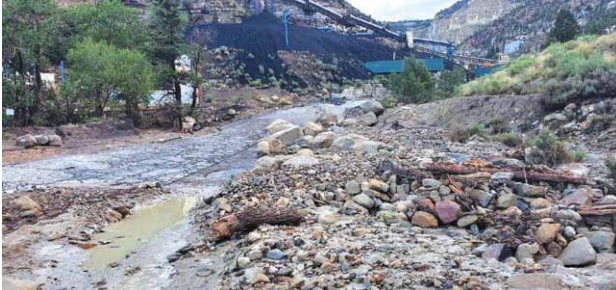
Miners trapped as a rat-hole coal mine floods
20 Jan 2025 – On the morning of January 6, when Babul Chandra Das from Tezpur, saw the news on TV, about an accident in a rat-hole mine near Umrangso in the Dima Hasao district of Assam, he became anxious. That’s where his wife’s elder brother Sanjit Sarkar, 35, had gone to work. Das and the rest of Sanjit’s family in Raichenga, a village in the Alipurduar district of West Bengal, tried contacting him over phone several times, in vain. Eventually, someone picked up the phone to deliver the fateful news – Sanjit was indeed trapped inside the mine, which was then engulfed by water.
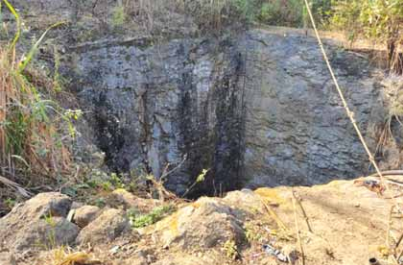
About 15 km from Umrangso, an industrial town in Dima Hasao, is a small village called 3 Kilo. As the last known settlement and marketplace in the area, 3 Kilo serves as the starting point for a roughly two-hour drive along a rough, dusty jungle road to Kalamati, where Assam Coal Quarry — the site of the accident — is situated.
Das, along with Sanjit’s father Krishnapada Sarkar and father-in-law Anil Sarkar, reached the site on the evening of January 7. They are currently staying in the same room which Sanjit was sharing with Rajeev Barman (39), Khusi Mohan Rai (57) and Sarpa Barman (46), all of whom hailed from the Kokrajhar district of Assam. While Rajeev managed to escape the flooding mine, his other roommates were not so fortunate. Khusi Mohan’s body was recovered on January 11, while no traces of Sanjit and Sarpa have been found.
Sanjit’s father Krishnapada told Mongabay India that the family has lost hopes of seeing him alive. “Hopefully the rescue team will be able to recover his body” he said. Sanjit is survived by his parents, wife and a four-year-old son. Krishnapada also revealed that the family wasn’t aware that Sanjit was actually going to work inside the mines. “He told us that he won’t indulge in mining work but would drive vehicles and operate cranes. He knew that if he told the truth, we would never allow him to go,” he added.
This incident is one of the biggest mining disasters in Assam, which has highlighted the dangers of rat-hole mining, a practice involving digging narrow tunnels to extract coal where the miners need to crawl on hands and feet or lay flat to navigate. This unscientific form of sub-surface mining also takes place in parts of north-east India and has been banned for over a decade in the neighbouring state of Meghalaya.
Illegal rat-hole mining operations
Assam Coal Quarry is not the only rat-hole mine in this area. Chandra Tamang, who was working at a nearby mine at the time of the incident says that there might be more than 20 similar mines, potentially running illegal operations, in the area. “After this accident, work in all the mines stopped. Our contractor has also fled,” he said. The accident site is only a few kilometres away from Meghalaya’s East Jaintia Hills district, where over six years ago, 15 miners were trapped in a flooded mine in Ksan.
According to recent data from the government, apart from Khusi Mohan, the bodies of three other miners, Ganga Bahadur Srestho (38) from Udayapur district in Nepal, Lijan Magar (26) from Umrangso, Dima Hasao and Sarat Goyari (37) from Sonitpur have been recovered. Sarpa, Hussain Ali (30), Jakir Hussain (38) and Mustafa Sheikh (44), all from Darrang, are also still missing at the time of publishing this article. Some local residents claim that the number of people who went missing inside the mine might be higher, as the government figure is based on the claim made by the missing miners’ families and acquaintances.
Rescue operations
On a regular work day, miners would go inside the mine at 4 a.m. for a seven to eight hours shift. On January 6, the miners descended to the mine at around 4.30 a.m. and after working for two hours, they encountered gushing water inside the 340-feet deep tunnel. Some miners escaped in time by either climbing a bamboo staircase or holding onto a trolley that carried them to the surface, while the rest remained trapped inside.
Professor Devesh Walia, Dean of the School of Human and Environmental Sciences, North Eastern Hill University (NEHU) told Mongabay India, “If the mining level goes below the level of water in the nearby Kopili river, then there are sufficient chances that water in the dam on Kopili will break and flood any of the mines. Looks like a lot of water from the dam site entered through the cracks underground and filled up the mine. Apart from facing the acidic water of Kopili, the miners trapped there are also encountering lack of oxygen and formation of methane gas inside the tunnel.” Studies and news articles have reported about the acidic nature of Kopili river and have linked it to unregulated coal mining.
The rescue operation at the accident site started on January 7, and agencies such as the National Disaster Response Force (NDRF), State Disaster Response Force (SDRF), Coal India Ltd (CIL), Indian Army, Navy, Assam Rifles, Oil and Natural Gas Corporation (ONGC), and Fire and Emergency Services were deployed. Nine pumps are running to dewater the mines.
Inspector R. K. Singh, 1st Battalion of NDRF, talking about the rescue operation to Mongabay India, said, “A total of 35 men from NDRF are currently deployed here. We are finding it difficult to move around the tunnels due to insufficient space and lack of visibility. As these mines were illegal, we don’t have any maps or blueprints to help us.”
People working in other mines nearby have come to aid the rescue operation. Saidul Islam from Darrang said, “I worked in a mine in Meghalaya nearby. After hearing about this incident, I came to see if I can be of any assistance.” Islam informed that there are around 30 people like him who have come from mines in Meghalaya as well as Umrangso.
The 340-feet deep mine was initially filled with 100 feet of water. With round the clock dewatering, the water went down to 59 feet on January 11, but it again started increasing from the next day.
Admitting the difficulties in dewatering the mine, Assam chief minister (CM) Himanta Biswa Sarma said, “Somehow the mine is connected with the nearby Kopili river, because even after running our pumps for 36 hours, we are able to reduce just one foot of water. Geologists have started to survey the place and after they submit a report, we might be able to chalk out an alternative plan.”
Sarma, while initially declaring the mine as ‘prima facie an illegal mine’, later claimed that it was an abandoned mine earlier, legally operated by Assam Mineral Development Corporation (AMDC). However, he said that the activity which took place in the mine on January 6, was definitely illegal.
Kaushik Rai, Assam’s mines and mineral industries minister, who was overseeing the rescue operation on the site, told Mongabay India that there could be more such abandoned mines around the area.
Justice Brojendra Prasad Katakey, who headed the one-person commission constituted by the Meghalaya High Court to investigate rat-hole mining in Meghalaya in 2018, told Mongabay-India, “It is difficult for me to comment about this incident, because I have not been to Dima Hasao. However, if mining starts in an abandoned mine, permission will be needed under the Mines and Minerals Development and Regulation (MMDR) Act. It looks like in this case, this was not done, as safety protocols were not followed. In East Jaintia Hills district itself, there are 22,000 such abandoned mines. Mining is still continuing in some of them.”
In his report submitted to the Meghalaya government, Justice Katakey has recommended arranging alternate livelihood opportunities for the miners.
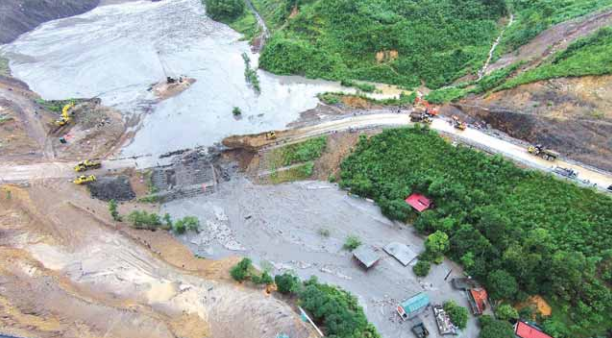
The human cost of illegal rat-hole mining
In 2014, the National Green Tribunal (NGT) banned rat-hole mining in Meghalaya on grounds of the practice being unscientific and unsafe for workers. However, even after a decade, the situation hasn’t changed much for the miners on the ground, in both Meghalaya and Assam.
Meghalaya-based social activist Agnes Kharshiing, reacting to the Umrangso incident, told Mongabay India, “There are many unreported deaths in these mines. The sardar (head of the labourers) brings labourers from other states or far off areas to work in the mines. This also amounts to human trafficking…The outside world has hardly any idea about what goes on here.”
Speaking about the harsh working conditions in these mines, Justice Katakey said, “Mining mainly takes place during the winter. In one of the mines we visited in Meghalaya, we found the miners living in small huts near a mine opening with tarpaulin sheets acting as roofs.”
A miner from Karbi Anglong district near Dima Hasao, on conditions of anonymity for safety reasons, recounted his experiences to Mongabay India. He said, “I have been working as a miner for 12 years and have worked in Meghalaya, Umrangso and also Ledo in Tinsukia. We generally go in groups of 10-12 people to look for work in mines and we are hired by sardars of different mines as per their requirement. In the mines, we are not given helmets or other safety gears. We carry our own pickaxes, shovels and a torch inside the mine. The thekedars (contractors) who pay us don’t keep any records of the people working in a mine. So, if any mishap happens inside a mine, it is not possible to accurately know how many people are inside.”
When asked why they keep working in such unsafe and hazardous conditions, he said, “We can earn around Rs. 1,500-2,000 a day working in a mine, which is almost double of what we get as daily wagers in cities and our villages. Also, as we don’t have much land, we can’t do agriculture either.”
Reflecting on the economics in these mines, Walia said, “The coal found in the Jaintia Hills/Umrangso belt is tertiary coal with a thin seam of two metres, which is not of the best quality. The tertiary coal is from a much recent in age. This coal has more sulfur and ash content. The seam of coal is important for deciding the type of mining taking place. However, even with this coal (lower quality), they can fill up 500-600 trucks daily, each with coal worth Rs. 70-80,000. This leads to huge profit and considering that, the amount they pay the miners is very less.”
The latest developments
The tragedy in Umrangso has another complex layer with two members of the Congress political party filing a complaint against Debolal Gorlosa, Chief Executive Member of Dima Hasao Autonomous Council and his wife Kanika Hojai, citing their involvement in the accident. However, CM Sarma, stated that those responsible for this mining disaster won’t be spared, and brushed off any involvement of Gorlosa and his wife in the matter.
On January 7, the police arrested Punish Nunisa, who was the leaseholder of the mine. On January 9, Hanan Laskar, the sardar of this mine was also arrested.
Nirmal Langthasa, a Congress leader from Dima Hasao, told Mongabay India that illegal rat-hole mining in Dima Hasao has become rampant from 2016. “Because of the NGT ban (on rat-hole mining) in Meghalaya, there was massive demand for coal, and rat-hole mining started outside AMDC demarcated areas such as Garampani and Kota Arda in Dima Hasao,” he said, insinuating fraud.
On January 16, following a cabinet meeting, Sarma briefed the media and announced that there will be a judicial enquiry and a probe by a Special Investigation Team (SIT) on the Umrangso incident. The judicial probe will be headed by Justice Anima Hazarika, Judge (Retd.) of Gauhati High Courts. An ex-gratia of Rs. 10 lakhs will be paid to the families of the nine miners who went missing in the mine. Sarma stated that it will take 25 to 60 days to completely dewater the mine and that the rescue process will continue.
The Cabinet has also decided to frame a standard operating procedure regarding a blanket ban on rat-hole mining in the state. Satellite imagery helped track 220 more mines in the Umrangso area, which will be closed down, in consultation with central agencies.
Source:
www.india.mongabay.com

24 missing after avalanche hits village in Uttarakhand
February 28, 2025 – In a life-and-death race against time, teams from the Indian Army and the Indo-Tibetan Border Police are working to save 24 workers who are feared trapped beneath the ice after a devastating glacier avalanche hit a Border Roads Organisation (BRO) project site at Mana village in Uttarakhand’s Chamoli district at around 5 a.m. on Friday
According to the Uttarakhand government, there were 57 civilian workers present at the affected site, where BRO construction work has been ongoing for the last two years.
Chamoli district’s Disaster Response Officer Nandkishore Joshi said that the workers had been sleeping inside a couple of containers when the avalanche hit their sheds. The victims include the construction workers as well as JCB drivers and other machine operators.
“There has been continuous snowfall in the area for the past 48 hours,” he said, adding that while many of the workers managed to run out of the sheds, a number of others are trapped under the mountain of ice that has covered the site.
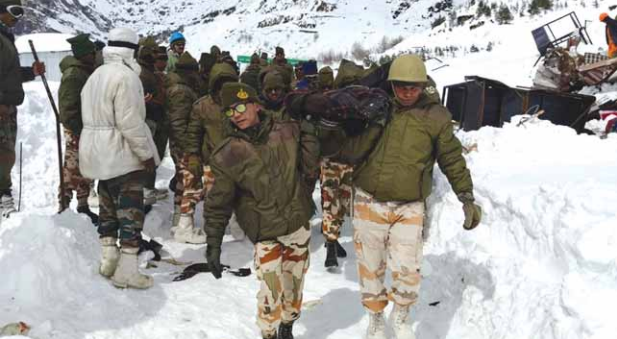
Army Brigade Commander Mandeep Dhillon said that a dedicated rescue team — comprised of seven officers, 17 Junior Commissioned Officers (JCO), and 150 other personnel of the IBEX Brigade which is trained for rescue operations in the Himalayas — has been deployed in Mana village since 8 a.m. They are equipped with a specialised medical team and engineering equipment.
“Ten people have been rescued so far, who are under treatment by Army doctors. The operation remains ongoing, with all resources focussed on saving lives,” Brigadier Dhillon said. He added that 22 other workers were reported to be safe. Late on Friday night, the Uttarakhand government said that the whereabouts of one more worker was traced later in the evening.
The injured workers have been admitted to the army hospital in Mana, according to a statement from the State Disaster Response Force. The doctors have stitched up a couple of the rescued workers who suffered grievous injuries on their heads and other parts of the body.
Snowfall interrupts
rescue efforts
The rescue operations were forced to stop multiple times during the day due to the extreme weather conditions, with continuous snow and rainfall in the upper reaches of the Himalayas, including at Mana. The India Meteorological Department has issued an advisory on the snowfall and the possibility of further avalanches in mountainous districts, along with the precautionary measures to be taken. The State government also issued two helpline numbers which can be contacted by the kin of the trapped workers seeking information about the rescue, as the communication channels at the site remained non-functional due to the bad weather.
“Sad news was received about many workers being buried under an avalanche during the construction work being carried out by the BRO near Mana village in Chamoli district. Relief and rescue operations are being carried out by ITBP, BRO and other rescue teams. I pray to Lord Badri Vishal for the safety of all the labourer brothers,” Uttarakhand Chief Minister Pushkar Singh Dhami said.
Describing it as a tragic incident, Defence Minister Rajnath Singh said that he has spoken to the CM and taken stock of the situation. Home Minister Amit Shah also assured the State government of all possible help in the rescue operation.
Source:
www.thehindu.com